-
General Staff: Russia has lost 998,080 troops in Ukraine since Feb. 24, 2022
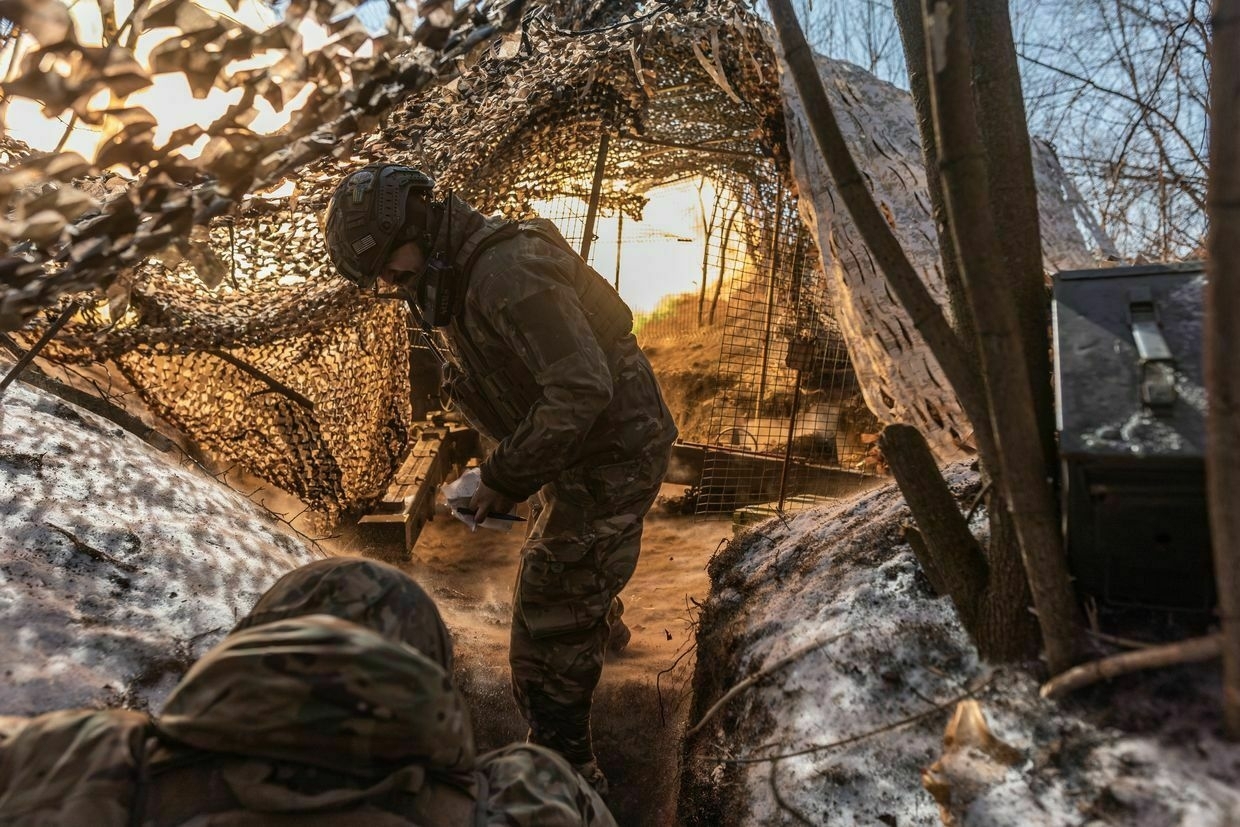
Russia has lost 998,080 troops in Ukraine since the beginning of its full-scale invasion on Feb. 24, 2022, the General Staff of Ukraine’s Armed Forces reported on June 10.
The number includes 960 casualties that Russian forces suffered just over the past day.
According to the report, Russia has also lost 10,919 tanks, 22,768 armored fighting vehicles, 51,455 vehicles and fuel tanks, 28,982 artillery systems, 1,412 multiple launch rocket systems, 1,183 air defense systems, 416 airplanes, 337 helicopters, 40,057 drones, 28 ships and boats, and one submarine.
Drone attacks target Russia’s Tatarstan Republic, Leningrad Oblast, media reportsDrone attacks targeted Russia’s Tatarstan Republic and Leningrad Oblast in the morning of June 10, independent outlet Astra reported.The Kyiv IndependentVolodymyr Ivanyshyn
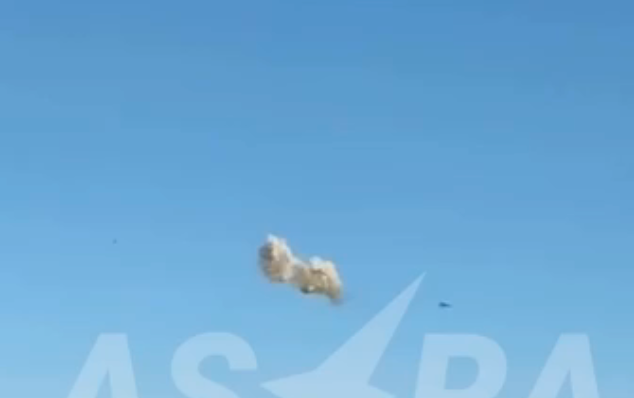
-
Drone attacks target Russia's Tatarstan Republic, Leningrad Oblast, media reports
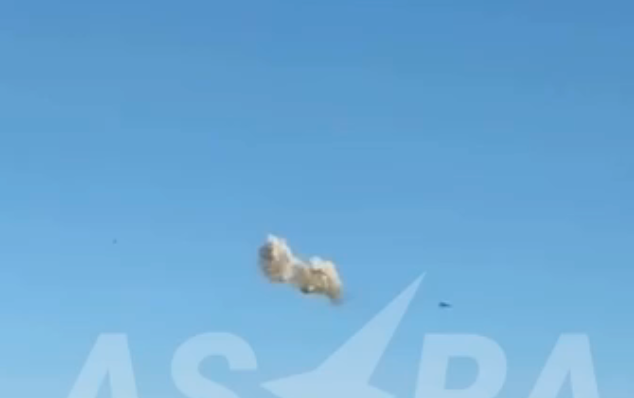
Editor’s note: This is a developing story and is being updated.
Drone attacks targeted Russia’s Tatarstan Republic and Leningrad Oblast in the morning of June 10, independent outlet Astra reported.
In Tatarstan, drones were reported flying over the town of Yelabuga and the city of Nizhnekamsk.
Nizhnekamsk is situated approximately 1,124 kilometers (about 700 miles) from Russia’s border with Ukraine.
Footage shared by Astra appears to show air defenses attempting to shoot down a drone flying over a field in Russia’s Tatarstan.
Meanwhile, in Leningrad Oblast, air defenses destroyed a drone flying over the Tosnensky district and another over the Lomonosov district, local governor Alexander Drozdenko claimed.
There were no casualties or damage to report, he added.
“In a number of areas, restrictions have been introduced on mobile communications and the internet,” Drozdenko said.
The Kyiv Independent could not independently verify the claims.
Restrictions were imposed at several Russian airports overnight on June 10 as a result of drone attacks, a spokesperson for Russia’s state aviation agency Rosaviatsia said.
The airports include St. Petersburg’s Pulkovo airport and Nizhnekamsk airport in Tatarstan.
Ukraine regularly strikes military targets deep within Russian territory in an effort to diminish Moscow’s fighting power in its ongoing war.
A chemical plant in Russia’s Tula Oblast caught fire after it was reportedly targeted a second time in a drone attack overnight on June 8.
On June 1, Ukraine launched a game-changing drone attack on four key Russian military airfields, damaging 41 planes, including heavy bombers and rare A-50 spy planes.
Kyiv claims it has disabled 34% of Russia’s strategic bomber fleet in what is seen as one of the most daring operations during Russia’s full-scale war.
What UK’s Strategic Defense Review means for UkraineBritish Prime Minister Keir Starmer announced on June 2 that the United Kingdom is moving to “warfighting readiness,” in large part in response to the full-scale invasion of Ukraine and the threat Russia poses to Europe. He made the comment as his government unveiled its latest Strategic Defense Review, whichThe Kyiv IndependentAlex Nichol
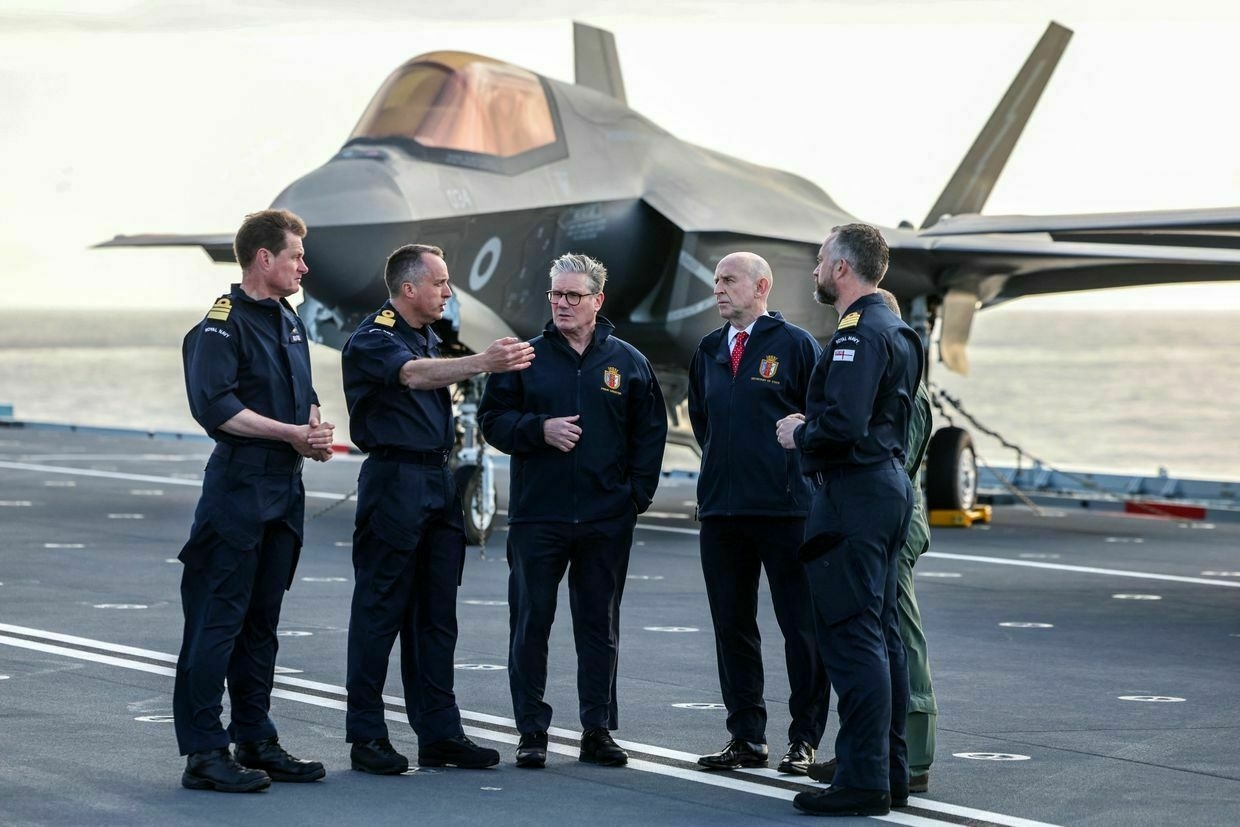
-
Pro-Ukrainian partisans destroy car used by Russian drone operators in occupied Melitopol, Atesh claims
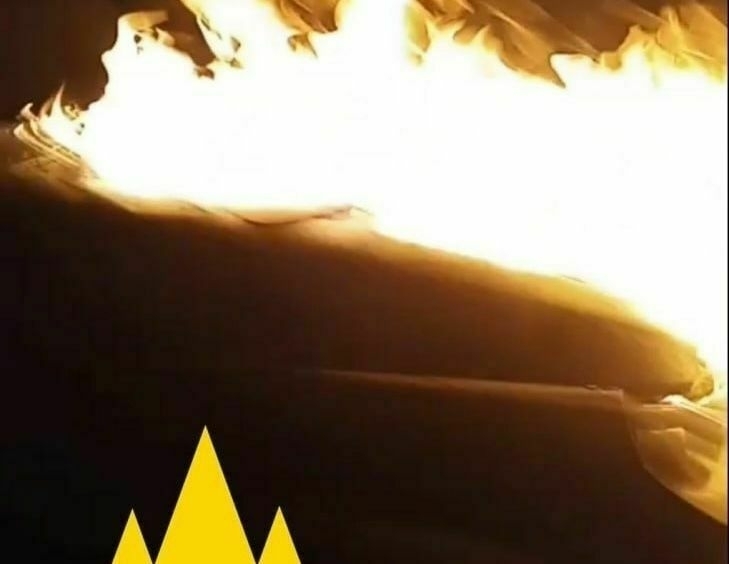
A car used by drone operators in the Russian 64th Separate Motorized Rifle Brigade was destroyed by the Atesh partisan group in occupied Melitopol overnight on June 10, the group claimed.
The Atesh group says they destroyed a military vehicle which contained a “mobile electronic warfare system,” claiming they temporarily “paralyzed” the work of the Russian unit.
“The resistance in southern Ukraine is alive and we are increasing the pressure every day,” the Atesh group said in a post to Telegram.
Meanwhile, Russia conducted a large-scale missile and drone attack on Kyiv and Odesa. One was killed, and seven were injured in both cities.
In Odesa, a medical facility and maternity hospital were damaged in the Russian attack.
“An incendiary mixture was used, which engulfed the car in a matter of seconds and completely destroyed it,” Atesh said.
The group claims they destroyed the car while it was left unguarded after studying the location and habits of the Russian crew.
“This vehicle was used for covert movement and tactical missions in the south of Ukraine. Now the enemy is left without critical transport,” the Atesh group said.
The Kyiv Independent could not verify the group’s claims.
The Atesh partisan group regularly conducts sabotage attacks in Russia and Ukraine’s Russian-occupied territories.
Ukraine begins new major prisoner exchange with RussiaAmong those freed are defenders of Mariupol who had spent more than three years in captivity.The Kyiv IndependentAnna Fratsyvir
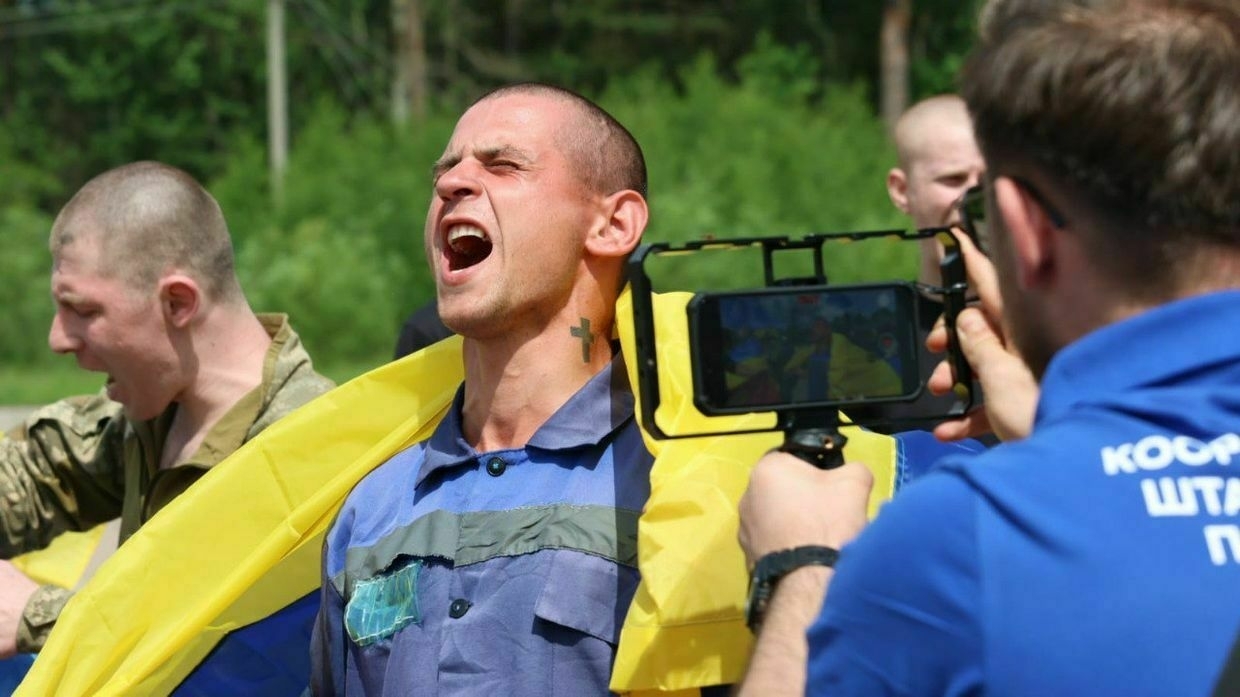
-
Waves of explosions rock Kyiv amid Russian missile, drone attack
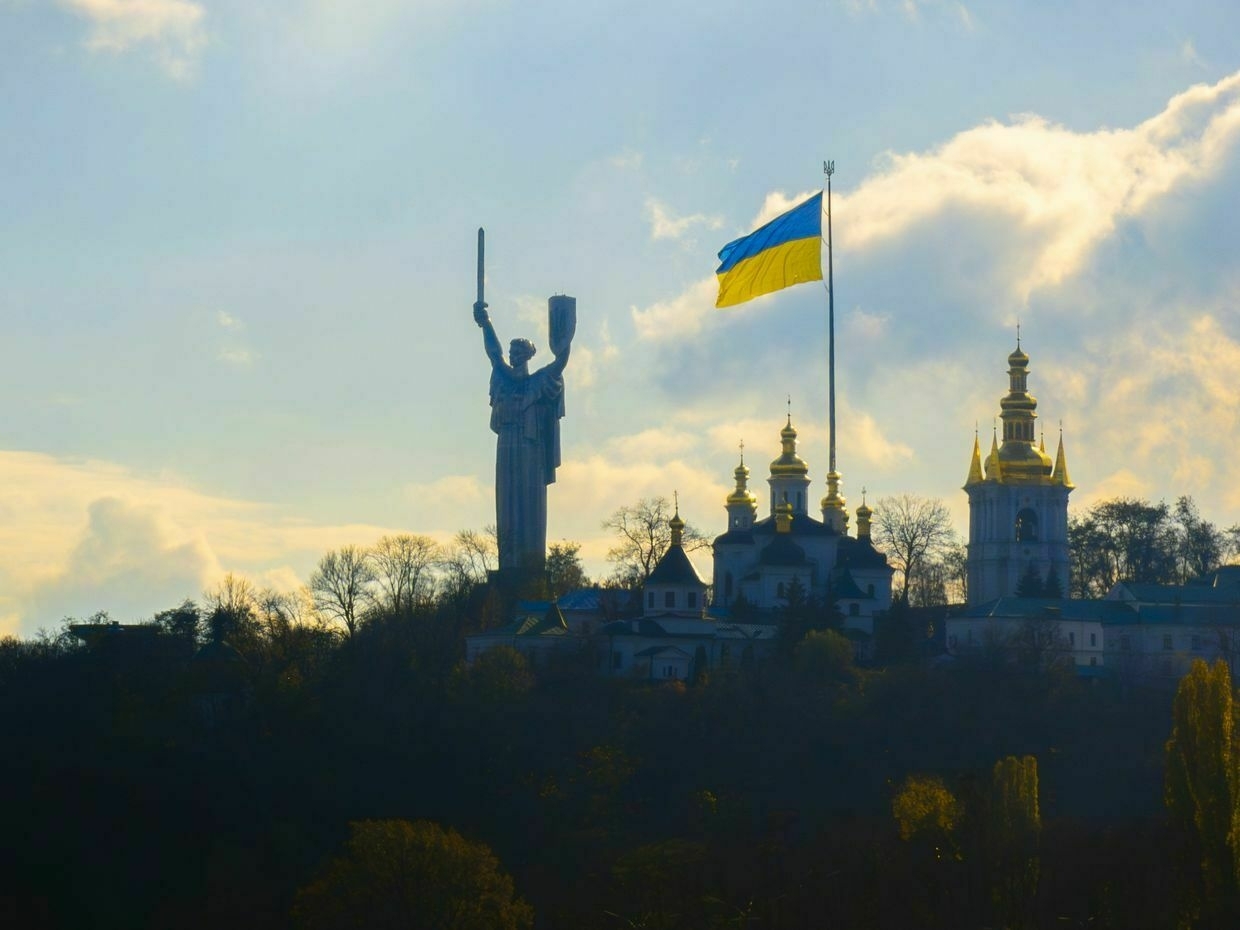
Editor’s note: This is a developing story and is being updated.
In the early hours of June 10, Kyiv came under another Russian attack, involving ballistic missiles and drones. Explosions were heard across the city as air defense systems engaged the targets.
Air defense earlier warned of the threat of missile and drone attack.
Kyiv Mayor Vitali Klitschko reported that cars were on fire in the Shevchenkivskyi district, while drone debris fell on the grounds of a school in the Obolonskyi district. Emergency services were dispatched to the sites of attack, and medics were also called to the Podilskyi and Darnytskyi districts.
In the Dniprovskyi district, smoke was seen coming from non-residential buildings, and a fire broke out at a non-residential site in the Obolonskyi district. Klitschko said a new wave of Russian drones was heading toward the capital and urged residents to remain in shelters as the mass attack on Kyiv continued.
The renewed assault comes just a day after Russia launched a record 499 aerial weapons against Ukraine, including 479 Shahed-type attack drones, decoy drones, four Kh-47M2 Kinzhal ballistic missiles, 10 Kh-101 cruise missiles, three Kh-22 cruise missiles over the Black Sea, two Kh-31P anti-radar missiles, and one Kh-35 cruise missile from occupied Crimea.
Ukraine reported it had neutralized 479 of those targets — 292 were shot down and 187 were disrupted through electronic warfare.
Exclusive: Russia’s ballistic missile production up at least 66% over past year, according to Ukrainian intel figuresRussia’s production of ballistic missiles has increased by at least 66% over the past year, according to data from Ukraine’s military intelligence (HUR) shared with the Kyiv Independent. According to data obtained by HUR, Moscow is now producing 60 to 70 Iskander-M — the ballistic version of the missile — and 10The Kyiv IndependentKollen Post
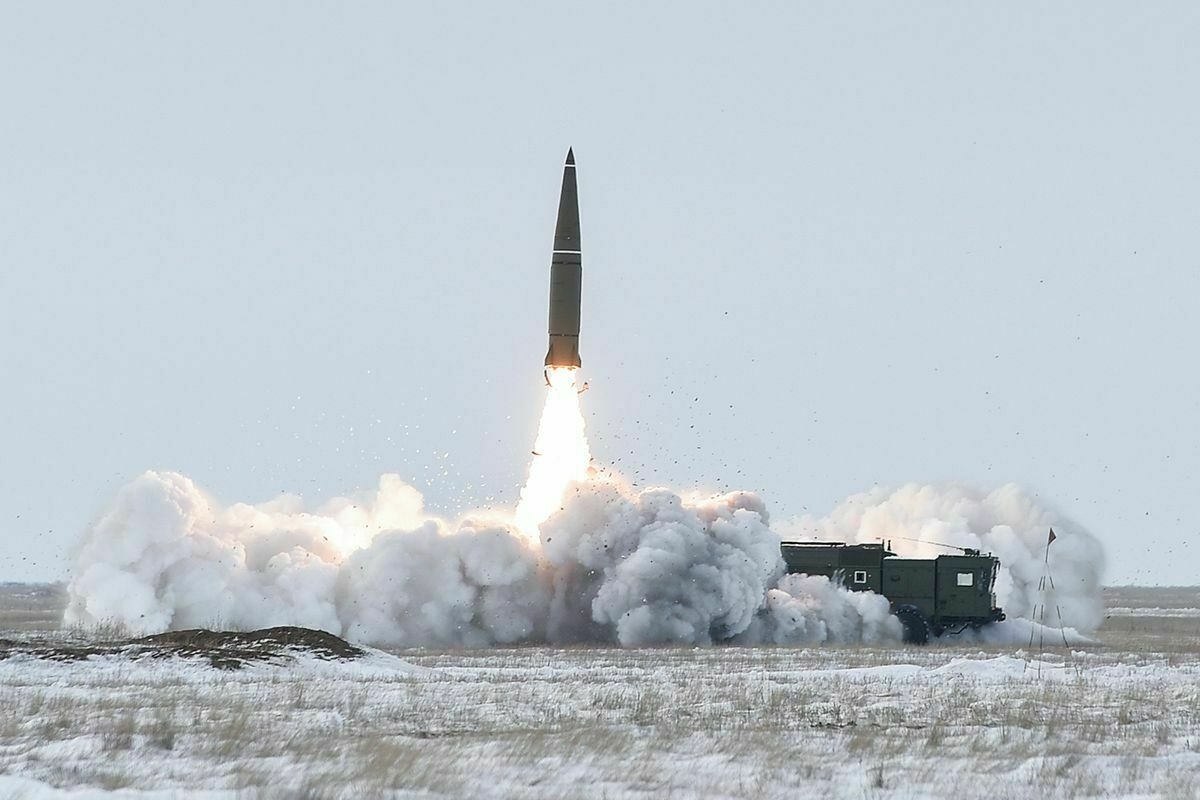
-
US accuses Russian of laundering millions, helping Moscow obtain sensitive technology

U.S. prosecutors have charged cryptocurrency entrepreneur Iurii Gugnin with laundering over $500 million and helping sanctioned Russian entities bypass export controls.
Gugnin, a 38-year-old Russian national living in New York, founded the U.S.-based companies Evita Investments and Evita Pay. He was arrested in New York on June 9 and faces multiple charges, including wire fraud, bank fraud, money laundering, and conspiracy.
According to court documents, Gugnin used his crypto payments companies to receive cryptocurrency from foreign clients, many of whom held accounts at sanctioned Russian banks. He then converted the funds into U.S. dollars through U.S. bank accounts and facilitated payments for electronics and other goods, concealing the origin of the money and the identities of those involved.
“Gugnin’s cryptocurrency company allegedly served as a front to launder hundreds of millions of dollars for sanctioned Russian entities and to obtain export-controlled technology for the Russian government,” said Assistant Director Roman Rozhavsky of the FBI’s Counterintelligence Division.
Between June 2023 and January 2025, Gugnin used Evita to facilitate the movement of approximately $530 million through the U.S. financial system, most of which he received in the form of a cryptocurrency stablecoin known as Tether, according to the U.S. Department of Justice report.
Prosecutors allege that Gugnin laundered money used to purchase parts for Rosatom, Russia’s state-owned nuclear technology company, and helped Russian end-users acquire export-controlled U.S. technology. Assistant Attorney General John A. Eisenberg said Gugnin turned a crypto startup into “a covert pipeline for dirty money.”
The Department of Justice accused Gugnin of deceiving banks and crypto exchanges by falsely claiming that Evita did not deal with Russian or sanctioned entities. He also allegedly doctored invoices to obscure Russian customers and failed to comply with anti-money laundering rules, including neglecting to file required suspicious activity reports.
If convicted, Gugnin faces a maximum penalty of 30 years in prison for each count of bank fraud and a maximum penalty of 20 years in prison for each of the wire fraud.
Key to Russia’s potential defeat lies in its economyAs the war in Ukraine grinds on, attention remains fixed on the battlefield. But Russia’s most vulnerable flank is not in the trenches — it’s in the treasury. The West, and especially the United States, holds economic levers that could push Vladimir Putin toward serious negotiations or even collapseThe Kyiv IndependentWojciech Jakóbik

-
Canada to hit NATO spending target this year as it shifts defense focus toward EU

Canada will reach NATO’s defense spending target of 2% of GDP this year, five years ahead of schedule, Prime Minister Mark Carney announced on June 9.
Speaking at the University of Toronto, Carney said the move is part of a strategic pivot away from reliance on the U.S. and toward deeper cooperation with the European Union, citing growing security threats from Russia, China, and other adversaries.
Carney said Canada’s current military capabilities are inadequate, noting that only one of four submarines is operational and much of the maritime and land fleet is outdated.
To reverse this trend, his government is launching a $6.8 (9.3 billion Canadian dollars) boost to the defense budget for 2025-26. The investment will be tabled in Parliament through supplementary estimates and directed toward rebuilding the Canadian Armed Forces, upgrading equipment, and expanding domestic production capabilities.
The new defense posture includes reassessing major procurement decisions, such as the planned purchase of U.S.-made F-35 jets, and prioritizing partnerships with European firms for equipment acquisitions.
Carney emphasized that three-quarters of Canada’s defense capital spending has gone to the U.S., a pattern he said must end. “We’re doing this for us,” Carney was quoted as saying. “Relatedly we’re doing it as a strong NATO partner, we’re a firm believer in NATO, and we’re standing shoulder to shoulder with our NATO allies, we’ll continue to do so. .”
Carney’s announcement comes just ahead of the NATO leaders' summit in late June, where member states are expected to commit to higher defense spending thresholds of up to 5%.
The prime minister said Canada would support a new NATO defense industrial pledge and participate in the EU’s ReArm Europe initiative. He added that future cooperation with the EU will be a major theme of the upcoming Canada-EU summit.
Ukraine war latest: Ukraine shoots down nearly 500 drones, missiles in Russian record strike, Air Force saysKey developments on June 9: * Ukraine shoots down nearly 500 drones, missiles in Russian record strike, Air Force says * Ukraine begins new major prisoner exchange with Russia * Russia claims offensive in Dnipropetrovsk Oblast aimed at creating ‘buffer zone,’ Ukraine denies reports of incursion * Putin approves new naval strategy asThe Kyiv IndependentThe Kyiv Independent news desk
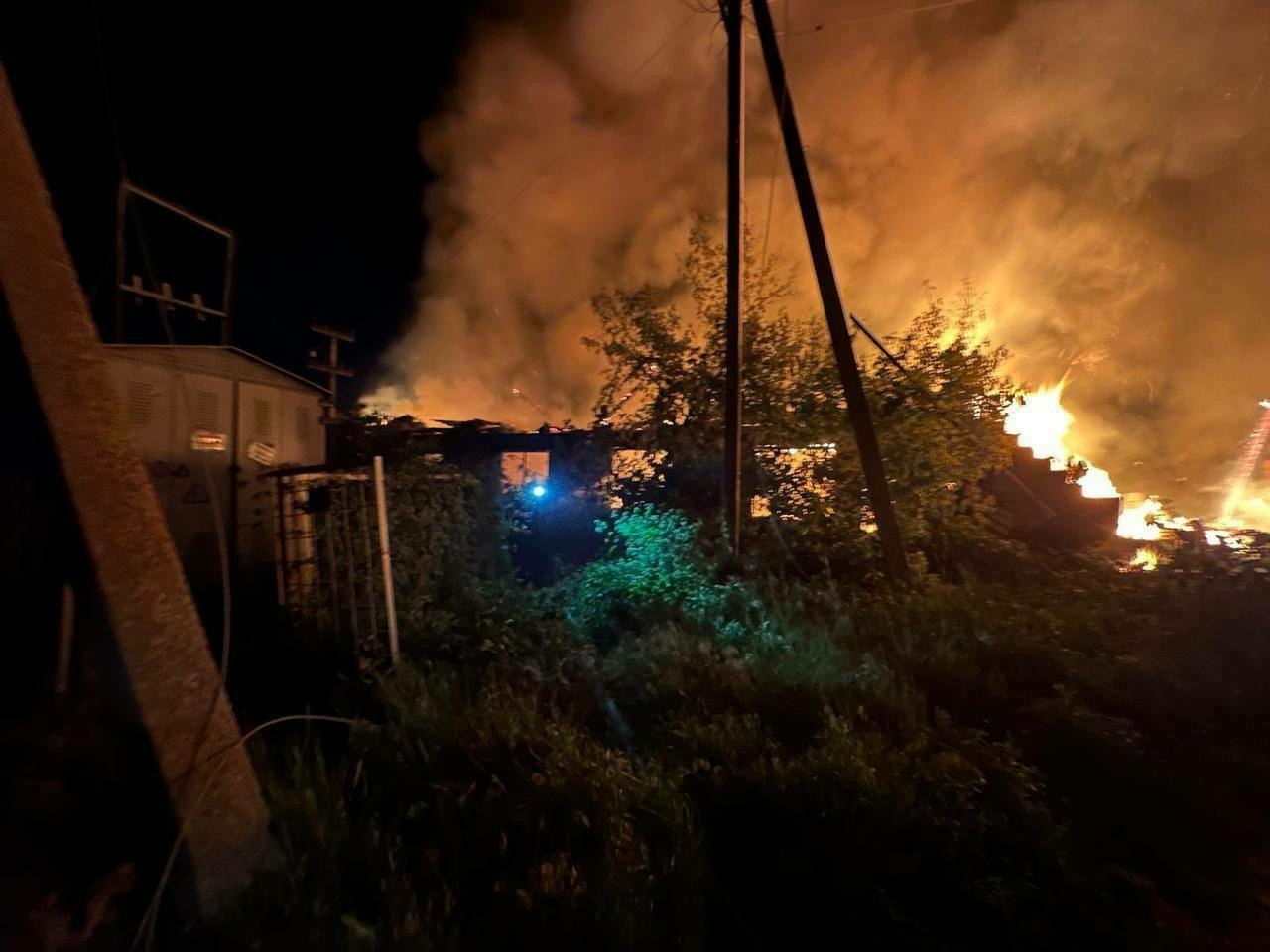
-
Ukraine’s ACCURACY is disrupting Russia’s MILITARY production – Zelenskyy
-
Ukraine brings WAR BACK to the aggressor’s territory! Drones STRIKE Russia again #shorts
-
Ukraine war latest: Ukraine shoots down nearly 500 drones, missiles in Russian record strike, Air Force says
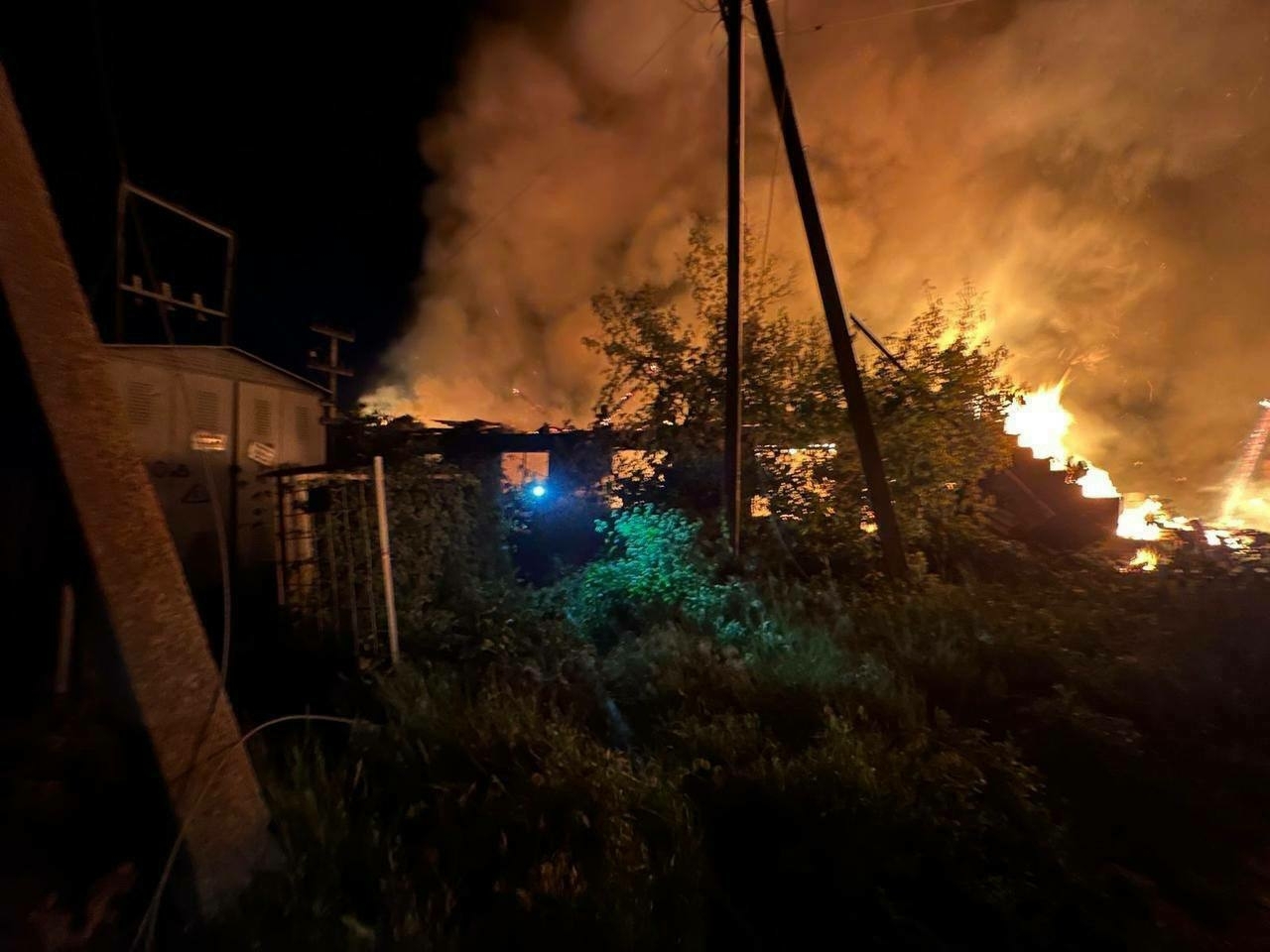
Key developments on June 9:
- Ukraine shoots down nearly 500 drones, missiles in Russian record strike, Air Force says
- Ukraine begins new major prisoner exchange with Russia
- Russia claims offensive in Dnipropetrovsk Oblast aimed at creating ‘buffer zone,’ Ukraine denies reports of incursion
- Putin approves new naval strategy as Russia seeks to restore maritime power
- Ukraine says it hit military aircraft, electronic warfare facility in Russia
Ukraine’s Air Force said on June 9 that it intercepted a total of 479 Russian drones and missiles during a record-high wave of strikes overnight.
According to the official statement, Russia launched 499 weapons, including 479 Shahed‑type attack drones and various decoy drones, four Kh‑47M2 “Kinzhal” air-launched ballistic missiles, 10 Kh‑101 cruise missiles, three Kh‑22 cruise missiles over the Black Sea, two Kh‑31P anti‑radar missiles, and one Kh‑35 cruise missile from occupied Crimea.
Ukraine had reportedly neutralized 479 of the incoming targets, with 292 shot down and 187 jammed or lost via electronic warfare.
The main target of the Russian attack was one of Ukraine’s airfields, Ukraine’s Air Force spokesperson Yurii Ihnat said on national television, without specifying the location or the strike’s impact on the facility.
The spokesperson called the June 9 attack “one of the largest that Russia has launched against Ukraine in recent times” and praised the Ukrainian air defense.
“Of course, there are also hits. We won’t specify in which locations, but with the number of missiles and drones that Russia is launching, it is impossible to shoot down everything,” Ihnat added.
Russia makes a year’s worth of NATO ammunition in 3 months, Rutte says“The capabilities of Putin’s war machine are speeding up, not slowing down,” NATO Secretary General Mark Rutte said.The Kyiv IndependentKateryna Hodunova
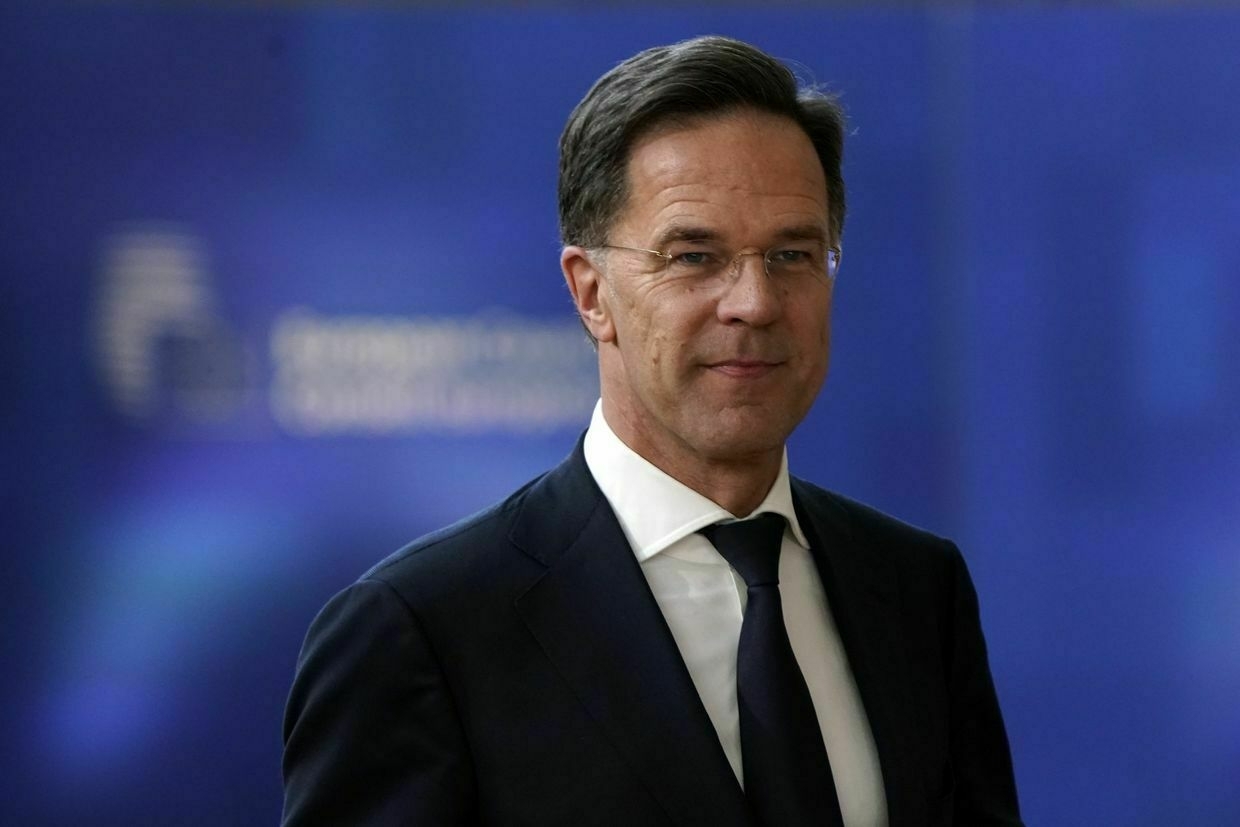
Ukraine begins new major prisoner exchange with RussiaUkraine has begun a large prisoner exchange with Russia as part of a deal reached during recent peace talks in Istanbul, President Volodymyr Zelensky confirmed on June 9.
“Ukrainians are coming home from Russian captivity,” Zelensky said in a statement. “Today, the exchange began and will continue in several stages over the coming days. Among those being returned now are wounded and severely wounded prisoners, as well as those under 25."
The swap marks the first stage of the agreement negotiated at the second round of direct Russia-Ukraine peace talks in Istanbul on June 2.
The Coordination Headquarters for the Treatment of Prisoners of War said the first group of released prisoners includes personnel from Ukraine’s Navy, Ground Forces, Air Force, National Guard, Border Guard Service, Territorial Defense, and State Special Transport Service.
Among those freed are defenders of Mariupol who had spent more than three years in captivity. All those returned in this stage are enlisted and noncommissioned soldiers, officials said.
“Most of those returned were captured in the first days of Russia’s full-scale invasion in 2022,” Ukraine’s Human Rights Ombudsman Dmytro Lubinets said.
Lubinets said his office monitored the exchange on the ground to ensure respect for human rights under the Geneva Convention and helped freed Ukrainians contact their families.
"We warmly welcome all who can now breathe the air of their homeland after years of captivity," Lubinets said. "Our team shares in the joy of the families who received that precious and long-awaited call."
The ongoing exchange covers specific categories — soldiers under 25, the severely wounded, and seriously ill prisoners — and Ukraine continues to work to repatriate the bodies of fallen servicemembers, according to the General Staff.
Ukrainian officials did not disclose the total number of POWs freed on June 9, citing security reasons. Ahead of the exchange, Zelensky had said Ukraine aimed to bring home 500 prisoners in the June 7-8 swap, which ultimately did not take place as scheduled.
June 9 swap comes after Kyiv denied Russian claims that it had delayed the planned June 7-8 exchange. Russian negotiator Vladimir Medinsky had accused Ukraine of postponing the swap indefinitely. Ukrainian officials dismissed this as disinformation.
Russia claims offensive in Dnipropetrovsk Oblast aimed at creating 'buffer zone,' Ukraine denies reports of incursionRussian forces are conducting their offensive in Ukraine's Dnipropetrovsk Oblast as part of efforts to create a "buffer zone" on Ukrainian territory, Kremlin spokesperson Dmitry Peskov said on June 9, according to Russian state-controlled media.
Peskov's comments allude to Russia's claims that the neighboring Ukrainian Donetsk Oblast belongs to Moscow. The claim is based on Russia's proclaimed annexation of the region in September 2022.
Kremlin spokesperson comments follow weeks of renewed Russian advances in Donetsk Oblast and President Vladimir Putin's May 22 statement that Moscow is working to establish a "security buffer zone" along Ukraine's borders with Kursk, Bryansk, and Belgorod oblasts.
Ukrainian officials denied Russia's latest claims of progress in Dnipropetrovsk Oblast.
"As of the morning of June 9, all Russian information, including Peskov's statements, about an offensive in Dnipropetrovsk Oblast does not correspond to reality," said Andrii Kovalenko, head of Ukraine's Center for Countering Disinformation.
Operational Command South reported on June 8 that Russian troops are continuing attempts to break into Dnipropetrovsk Oblast but described the situation as "tense" rather than indicating any successful advance.
The Russian Defense Ministry claimed on June 8 that its forces had entered Dnipropetrovsk Oblast. Ukrainian officials immediately rejected the assertion.
Viktor Trehubov, spokesperson for Ukraine's Khortytsia group of forces, also called the reports false, telling CNN that Russian forces had not advanced from the Pokrovsk or Novopavlivka directions, where the three oblasts of Donetsk, Zaporizhzhia, and Dnipropetrovsk converge.
Since 2014, Russian aggression has heavily impacted Donetsk Oblast, while Dnipropetrovsk Oblast has remained free from confirmed ground incursions. Ukraine rejected similar Russian claims in May, when officials debunked allegedly fabricated photos purportedly showing Russian troops in the region.
Despite this, Dnipropetrovsk Oblast has faced frequent Russian missile and drone attacks throughout the full-scale war. The region began mandatory evacuations from four front-line villages in April as a precaution.
Inside Russia, calls for peace come with conditions — and Kremlin talking pointsFollowing the second round of direct peace talks with Ukraine, the Russian side leaked its proposal on how to end its war — effectively a demand for Ukraine’s surrender. Yet, if the intentions of the Kremlin are no secret — continue the war until a political or military victory — getting information onThe Kyiv IndependentOleg Sukhov
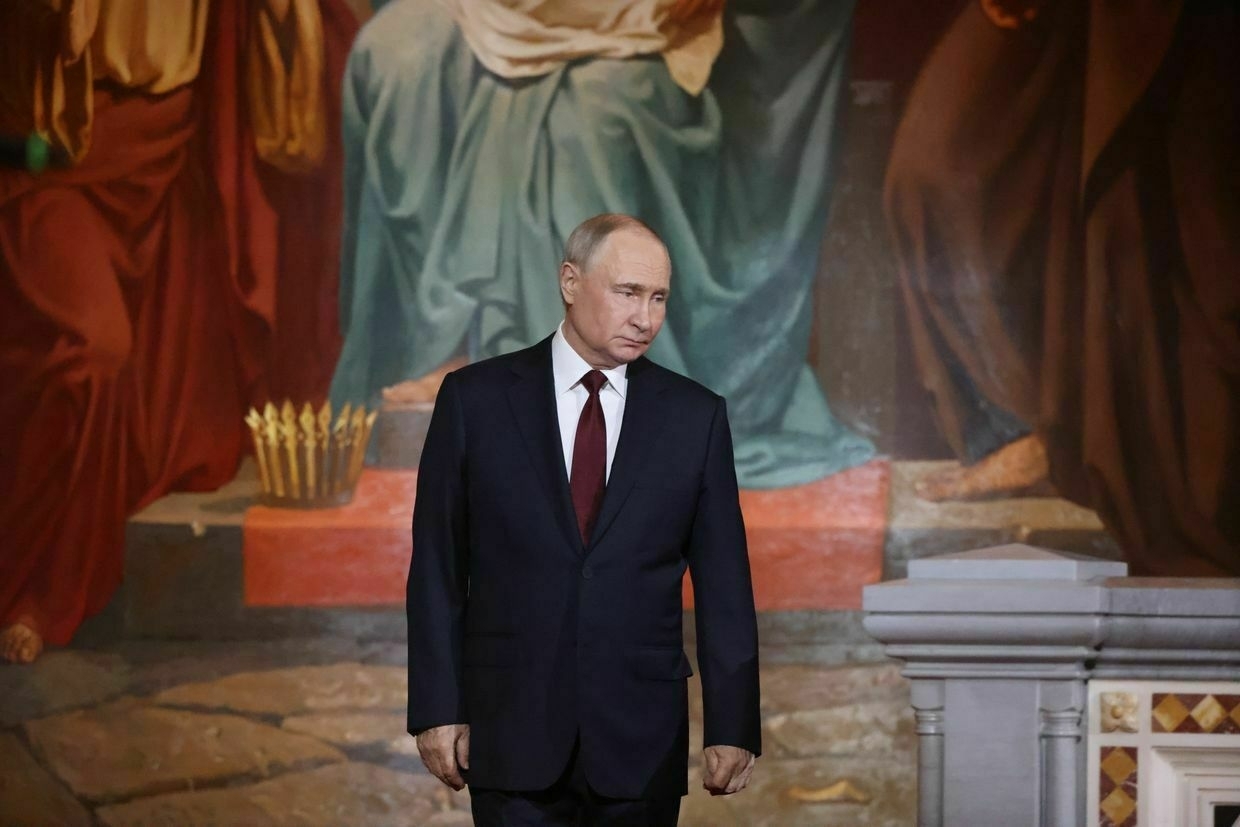
Putin approves new naval strategy as Russia seeks to restore maritime powerRussian President Vladimir Putin has approved a new naval strategy aimed at fully restoring Russia's position as a leading global maritime power, Kremlin aide Nikolai Patrushev said in an interview with the Russian state-controlled Argumenty i Fakty newspaper, published on June 9.
Patrushev, a former KGB officer, told the Russian newspaper that the new document, titled The Strategy for the Development of the Russian Navy up to 2050, was approved in late May.
"Russia's position as one of the world's greatest maritime powers is gradually recovering," Patrushev said. He added that such work requires a long-term vision of future maritime challenges and threats.
Patrushev provided no further details on the new naval strategy.
Russia currently operates the world's third most powerful navy, according to most public rankings, behind China and the United States. However, the fleet has suffered a string of losses during the war against Ukraine, particularly in the Black Sea.
Exclusive: Russia’s ballistic missile production up at least 66% over past year, according to Ukrainian intel figuresRussia’s production of ballistic missiles has increased by at least 66% over the past year, according to data from Ukraine’s military intelligence (HUR) shared with the Kyiv Independent. According to data obtained by HUR, Moscow is now producing 60 to 70 Iskander-M — the ballistic version of the missile — and 10The Kyiv IndependentKollen Post
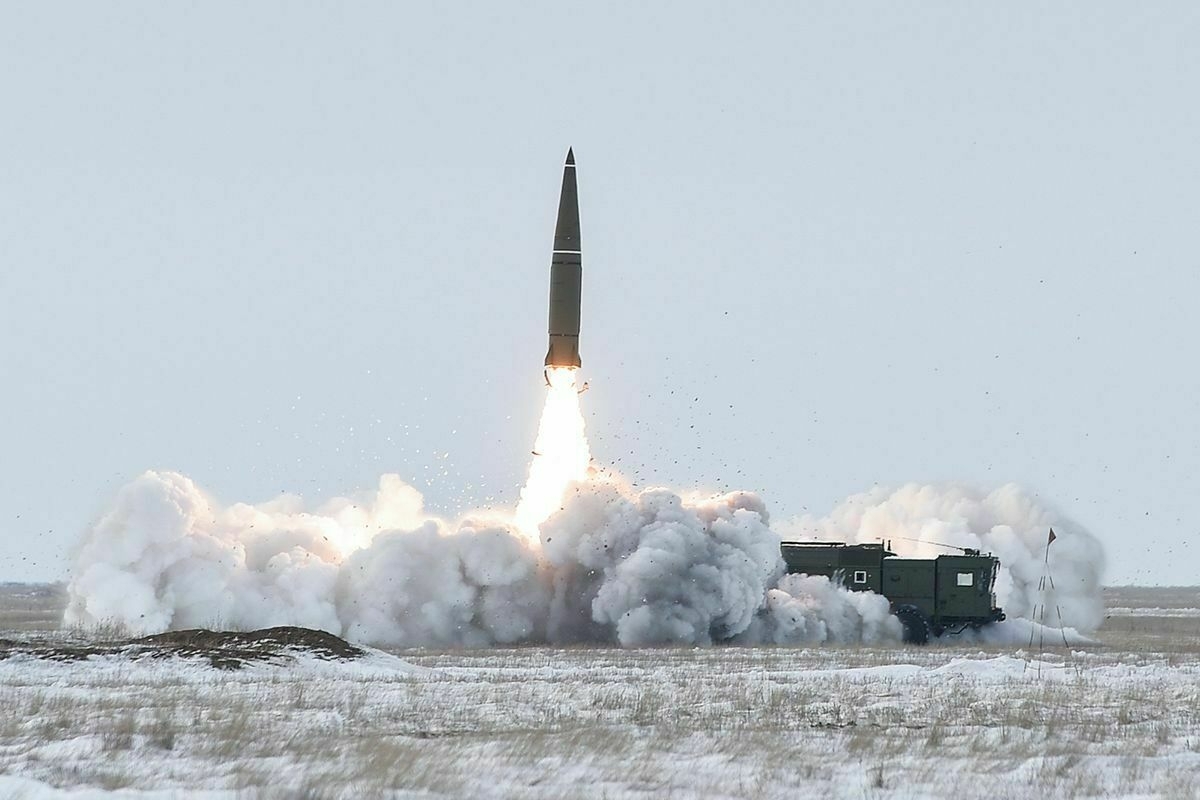
Ukraine says it hit military aircraft, electronic warfare facility in RussiaUkraine damaged two Russian military aircraft — a MiG-31 and either a Su-30 or Su-34 fighter jet, as well as struck the JSC VNIIR-Progress facility in the Russian city of Cheboksary in the Chuvashia Republic, the General Staff of Ukraine's Armed Forces said on June 9.
Ukrainian drone units, in coordination with other units, targeted VNIIR-Progress and ABS Electro in Cheboksary overnight as part of efforts to degrade Russia's capacity to produce air attack systems.
The targeted facilities are part of Russia's military-industrial complex and produce adaptive Kometa antennas, used in Shahed-type attack drones, planning and correction modules for guided aerial bombs (KAB), and other precision-guided weapons, the General Staff said.
The Ukrainian military confirmed that at least two drones struck the site, causing a large fire. The results of the strike are still being assessed.
Ukraine's overnight strike also targeted the Savasleyka airfield in Russia's Nizhny Novgorod Oblast, which the Kremlin uses to launch MiG-31K jets armed with Kinzhal hypersonic missiles, according to the General Staff.
The operation was conducted by Ukrainian Special Operations Forces in coordination with other units.
Note from the author:
Ukraine War Latest is put together by the Kyiv Independent news desk team, who keep you informed 24 hours a day, seven days a week. If you value our work and want to ensure we have the resources to continue, join the Kyiv Independent community.
-
New Ukrainian school helps the displaced build new lives through hospitality

In a luxurious resort complex north of Kyiv, 12 women are retraining to enter the hospitality sector in a new school that will kickstart a fresh life for Ukraine’s internally displaced people (IDPs).
The women, mostly from Ukraine’s occupied territories, are learning to be housekeepers in the first program organized by German-born non-profit school Grains. Unlike other hospitality schools in Ukraine, Grains also focuses on the personal development of students, and they are guaranteed a job with the Shelest hotel after they complete nine days of training.
Grains is the brainchild of Berlin-based venture developer Maddina Katter and Elena Muradyan, CEO of Shelest, a luxury hotel that opened in 2020. They hope to address two challenges: integrating some of the approximately 5 million internally displaced persons (IDPs) and addressing a workforce deficit in the hospitality sector, which has boomed since the full-scale invasion due to rising domestic tourism.
Integrating IDPs is a top priority for Ukraine’s Social Protection Ministry, and the ministry found 30% of Grains' applicants. The ministry said it would help Grains secure more funding if at least two IDP students entered employment afterwards.
“The government needs us,” Katter told the Kyiv Independent.

Instructor speaks with students during a session at the Grains hospitality school for internally displaced people at the Shelest hotel in Kyiv Oblast, Ukraine, on May 22, 2025. (Fabian Kaluza / Grains) “Until today, there is no project in Ukraine that directly connects education and employment, and also works with the personal (development) of students.
“Students will never pay for the school, made possible thanks to partners who will provide the 180,000 euros ($205,000) needed annually. The main donor is German defense company ARX Robotics, which initially invested 25,000 euros ($28,000) into the non-profit company.
“It’s a blueprint that we want to develop in the future.”
Shelest, owned by one of Ukraine's top investment bankers, Ihor Mazepa, covers operational costs, including bussing students to school from Kyiv, food and drinks, plus bookkeeping and HR. The school, a trendy Scandinavian-style building constructed with wood and glass, is nestled into the Shelest resort and connects to the restaurant where students train.
It's a win-win, Katter said. Shelest gets qualified staff, IDPs get jobs, and the state receives taxes and spends less on support programs.
In the future, Grains will include other programs like bar and restaurant work, and partner with other high-end hotels offering good salaries and benefits. The courses are open to all Ukrainians, but Katter wanted the first one to be geared toward women.
In wartime Ukraine, a university grows — and reclaims a space once reserved for the corruptOnce the playground of disgraced Ukrainian politicians, a golf club in Kyiv’s Soviet-era Obolon neighborhood is now set to become the new campus of the Kyiv School of Economics, which last month bought the site for $18 million as part of a $40 million investment — the largest private investmentThe Kyiv IndependentLiliane Bivings
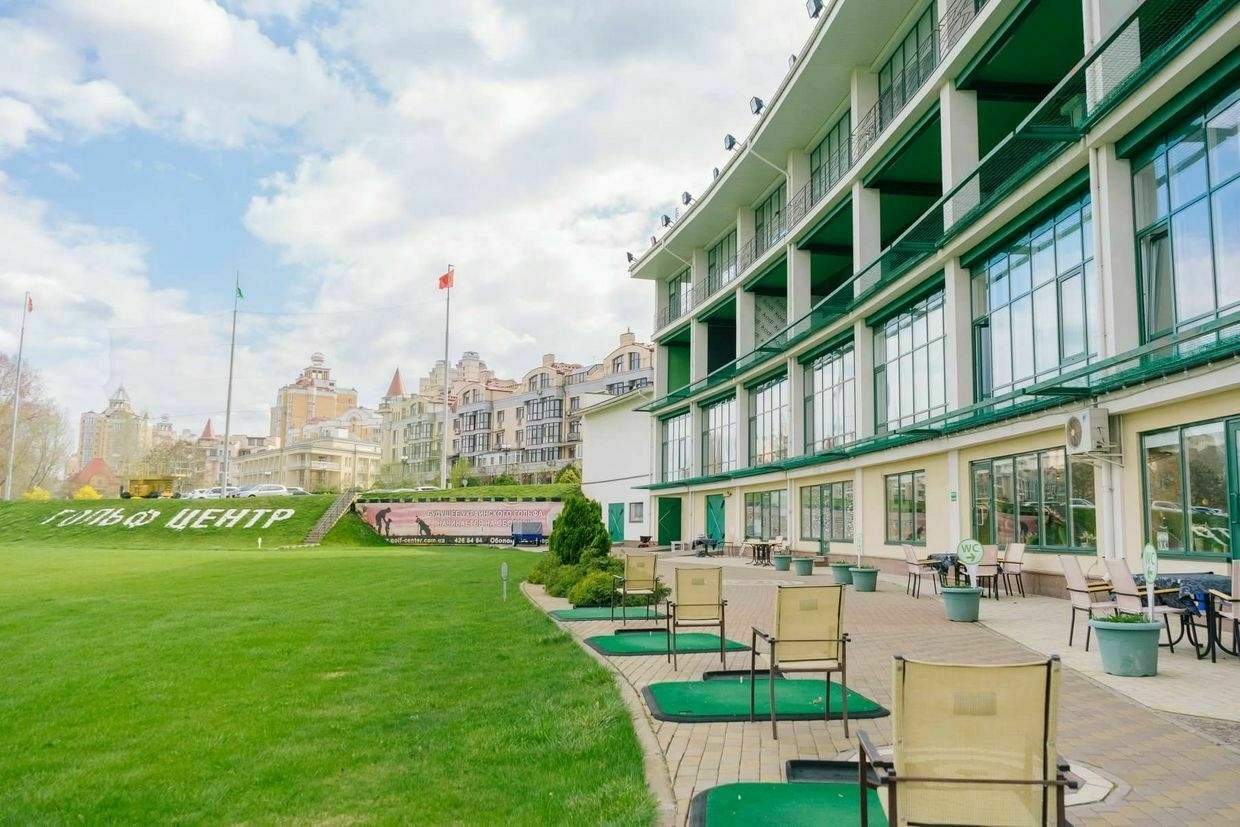
New thinkingThe idea for Grains came to Katter over two years ago in Berlin when she met Muradyan, who had fled Ukraine with her daughter. Katter had already set up the company Bulletproof Ukraine, making affordable bulletproof vests for civilians, and wanted to create an educational project. When she heard Muradyan's struggles to find employees in the hotel industry, she realized hospitality would be the right path.
Salaries have increased in the sector, and housekeepers can earn Hr 1,400 ($35) daily in a hotel like Shelest, above the average salary in the country. Katter saw the opportunity for Grains to help reduce unemployment among IDPs in Ukraine, which is higher than among other citizens, and plug the workforce deficit.
"We want to show to the students that they can be creators of the reality they want to live in."
Alongside theoretical and practical classes, taught by senior staff at Shelest, Katter starts every eight-hour day with a personal wellness session at 10 a.m. This is not about mental health, she says, but helping students set and achieve personal goals and breaking free from something she believes plagues post-Communist countries – the Soviet mindset.
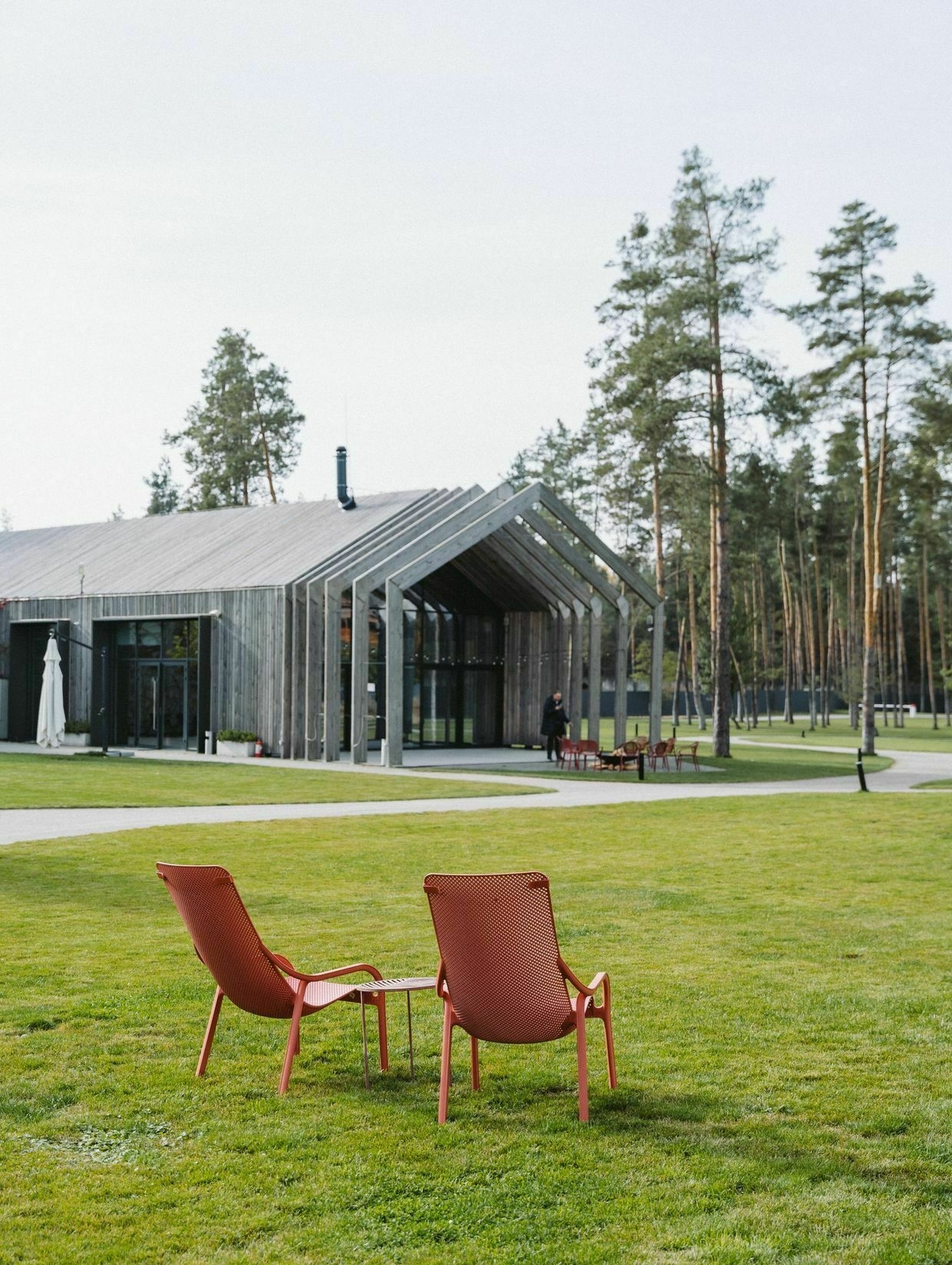

R: A building of the Shelest hotel in Kyiv Oblast, Ukraine, in an undated photo. L: A speaker addresses students during a session at the Grains hospitality school for internally displaced people, at the Shelest hotel in Kyiv Oblast, Ukraine, on May 13, 2025. (Madina Katter / Grains) Katter wants students to gain confidence and aim high in their careers. Grains sets out a path to progress in the hospitality industry, but the skills they learn are transferable to other jobs if students want to try something else.
"In the Soviet mindset, everyone is just confined to whatever life path is outlined for them. We want to show to the students that they can be creators of the reality they want to live in,” Katter said, adding that she also sees this issue in her homeland, Kazakhstan.
Blueprint for the futureFor now, Grains has space for maximum 20 people per course, and soon students will be able to stay in on-site dormitories. For the first program, the school interviewed 60 applicants and accepted 12 who the company felt were keen to remain in hospitality.
The first students graduated on May 23, and 95% went on to work at Shelest. The next program will launch at the end of July for housekeepers, while the team currently develops a culinary arts course with esteemed Kyiv chef Mirali Dilbazi.
One student, Tetiana Izorkina, originally from now-occupied Luhansk, saw the program advertised on Telegram, a messaging app. Stable and safe work is hard to find in her current town, Dobropillia, Donetsk Oblast, which is near the front line.
Her mother and grandmother initially thought Grains was a scam because it was free, an issue that Katter says will be solved once the company has a bigger presence and reputation. Fortunately for Izorkina, it wasn't, and she found herself in awe of the manicured lawns, flowerbeds, and contemporary art that decorates the resort.

Graduates of the first Grains hospitality school for internally displaced people pose with their certificates at the Shelest hotel in Kyiv Oblast, Ukraine, on May 22, 2025. (Fabian Kaluza / Grains) "In Donetsk Oblast, you only see gray colors. There are only soldiers around me, and you cannot see beautiful art. You only see dark," she said, adding how happy and emotional she felt to be on the course.
For Izorkina, hospitality will be one of the key industries when the war ends, as tourist numbers are expected to climb back to over 14 million per year. She wants to join those working in hotels, restaurants, and bars to welcome tourists with high hospitality standards.
In the long term, Ukraine is just the beginning, and Katter wants to take it worldwide. She sees Germany as the next country due to the high number of displaced people living there.
"What we are building right now in Ukraine is a start. It's a blueprint that we want to develop in the future. Grains needs to become a tool that works for people everywhere in the world," she said.
Note from the author:
Hi, it’s Dominic, thank you for reading this story. It’s not all doom and gloom in Ukraine, and I want to shine a light on some of the positive things happening during the war. The women I met on the course were incredible and inspiring. It takes a lot to completely start fresh in life, especially when you’ve had everything turned upside down. To help us keep bringing you good news from Ukraine, please consider becoming a member.
-
Breaking! Ukraine BLOCKS Russian drone manufacturing efforts | NEWS PULSE
-
Russia makes a year’s worth of NATO ammunition in 3 months, Rutte says
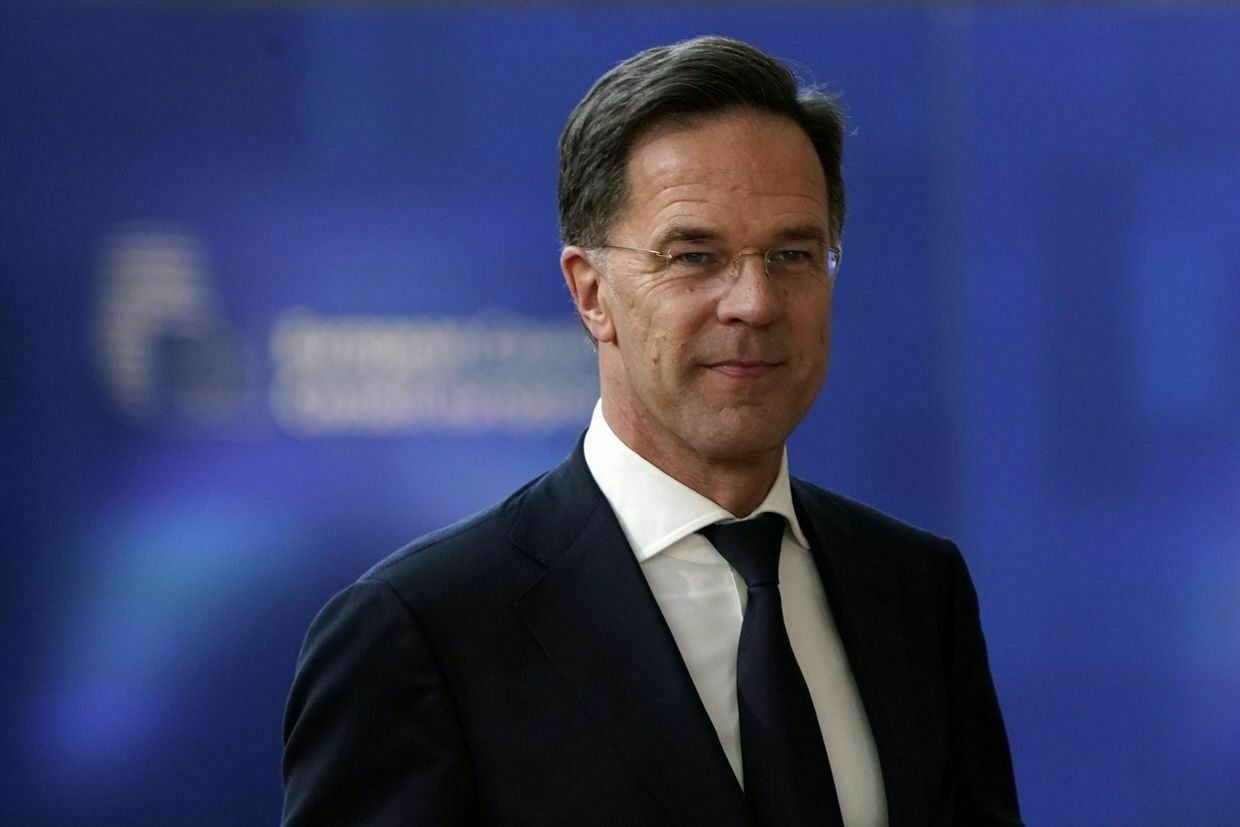
Russia produces as much ammunition in three months as NATO does in a year, posing serious risks for the alliance, NATO Secretary General Mark Rutte said on June 9 at Chatham House in London.
“The capabilities of (Vladimir) Putin’s war machine are speeding up, not slowing down,” Rutte said. “Russia is reconstituting its forces with Chinese technology and producing more weapons faster than we thought."
Rutte’s statement comes amid mounting tensions between the alliance and Russia and an increasingly uncertain U.S. commitment to European security.
According to Rutte, Russia is restoring its military potential with the help of China, Iran, and North Korea. This year, the Russian industrial complex is expected to roll out 1,500 tanks, 3,000 armored vehicles, and 200 Iskander missiles, NATO chief said.
“Russia could be ready to use military force against NATO within five years,” Rutte said. “Let’s not kid ourselves."
“We are all on the eastern flank now. The new generation of Russian missiles travels at the speed of sound. The distance between European capitals is only a matter of minutes. There is no longer east or west. There is just NATO,” he added.
When asked whether a long-term truce in Ukraine’s war against Russia would allow the latter to stockpile even more weapons and increase the risks to NATO, Rutte said: “That’s a statement of fact."
“Our assumption at the moment is that even whilst the war against Ukraine is continuing, they (Russian forces) are still able to increase stockpiles slightly, but that’s debatable,” Rutte added.
Russia’s full-scale invasion of Ukraine in 2022 prompted European countries to hike defense spending in order to revive their military capabilities, which atrophied after decades of disarmament following the Cold War.
The matter gained more urgency after signals that the U.S., the most powerful military in NATO, plans to scale down its presence in Europe as President Donald Trump shifts strategic focus to the Asia-Pacific region.
Ukrainian foreign intelligence chief Oleh Ivashchenko recently warned that Russia will be able to replenish its forces between two and four years after the war in Ukraine, allowing it to launch aggression against Europe.
‘Find and destroy’ – how Ukraine’s own Peaky Blinders mastered the art of bomber dronesEditor’s note: In accordance with the security protocols of the Ukrainian military, soldiers featured in this story are identified by first names and callsigns only. DONETSK OBLAST – From the moment the vehicles duck into pre-prepared positions in the leafy treeline to the first dead Russian soldiers, less than twentyThe Kyiv IndependentFrancis Farrell
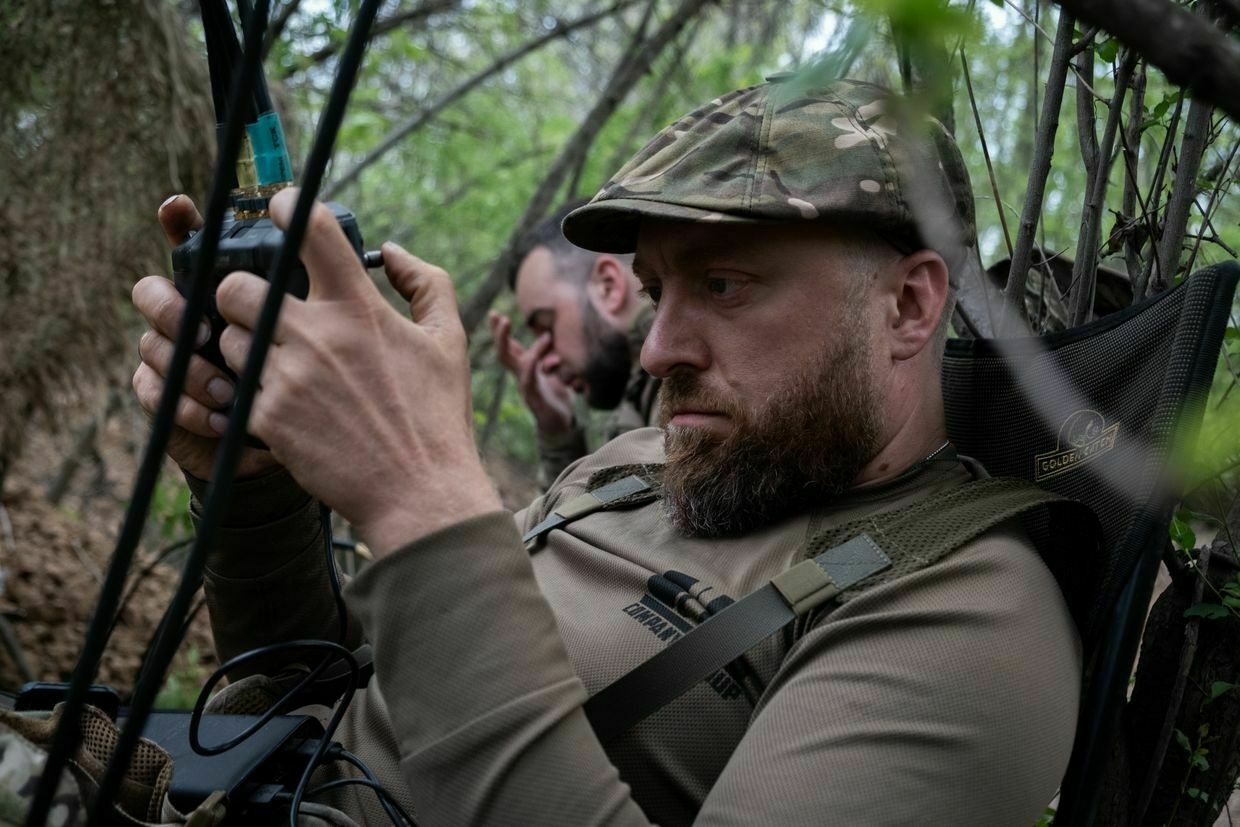
-
Ukraine reinvented Trojan Horse with Operation Spiderweb, NATO admiral says
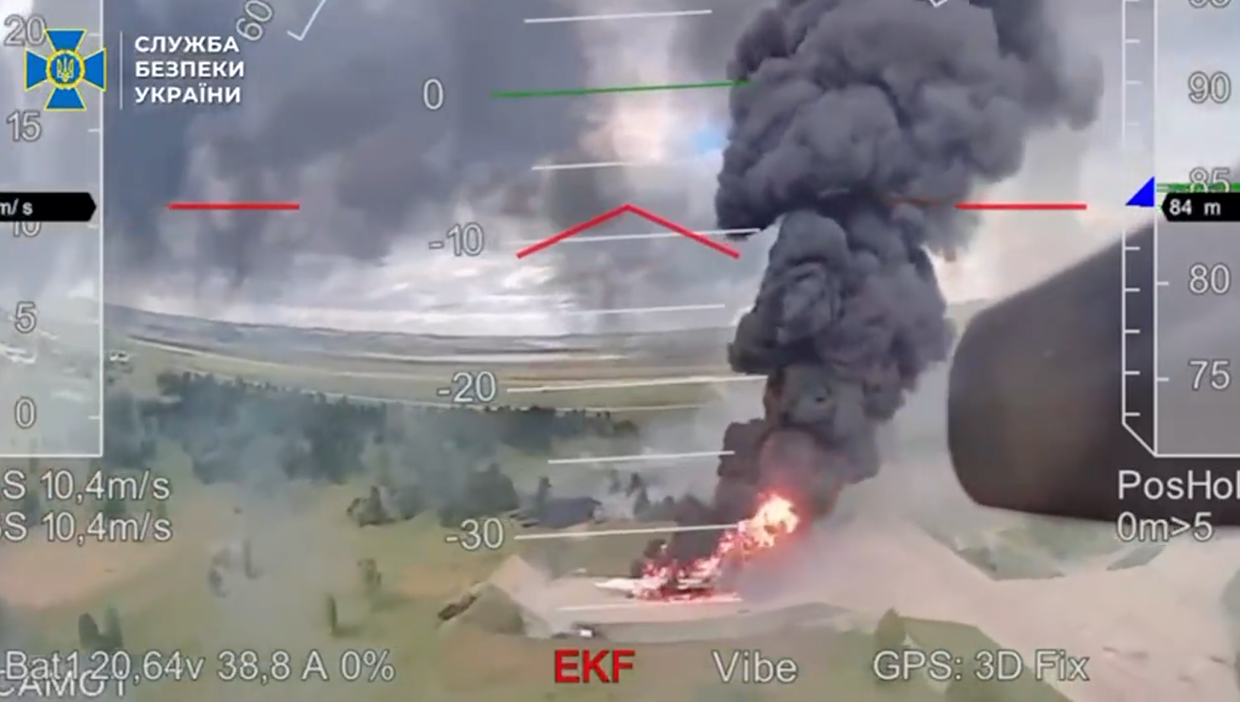
Ukraine has reinvented the Trojan Horse tactic during Operation Spiderweb inside Russia, NATO Admiral Pierre Vandier said in an interview with AFP on June 9.
Kyiv’s operation, conducted overnight on June 1, involved hiding first-person view (FPV) drones in trucks deep inside Russia before the attack. The operation damaged 41 aircraft, including Tu-95 and Tu-22M3 bombers — two of Russia’s primary platforms for missile attacks against Ukraine, according to the Ukrainian military. It caused approximately $7 billion in damage and disabled one-third of Russia’s cruise missile bombers, according to a source in the Security Service of Ukraine.
“What the Ukrainians did in Russia was a Trojan Horse — and the Trojan Horse was thousands of years ago,” Vandier, NATO’s supreme allied commander transformation, said. “Today, we see this kind of tactic being reinvented by technical and industrial creativity."
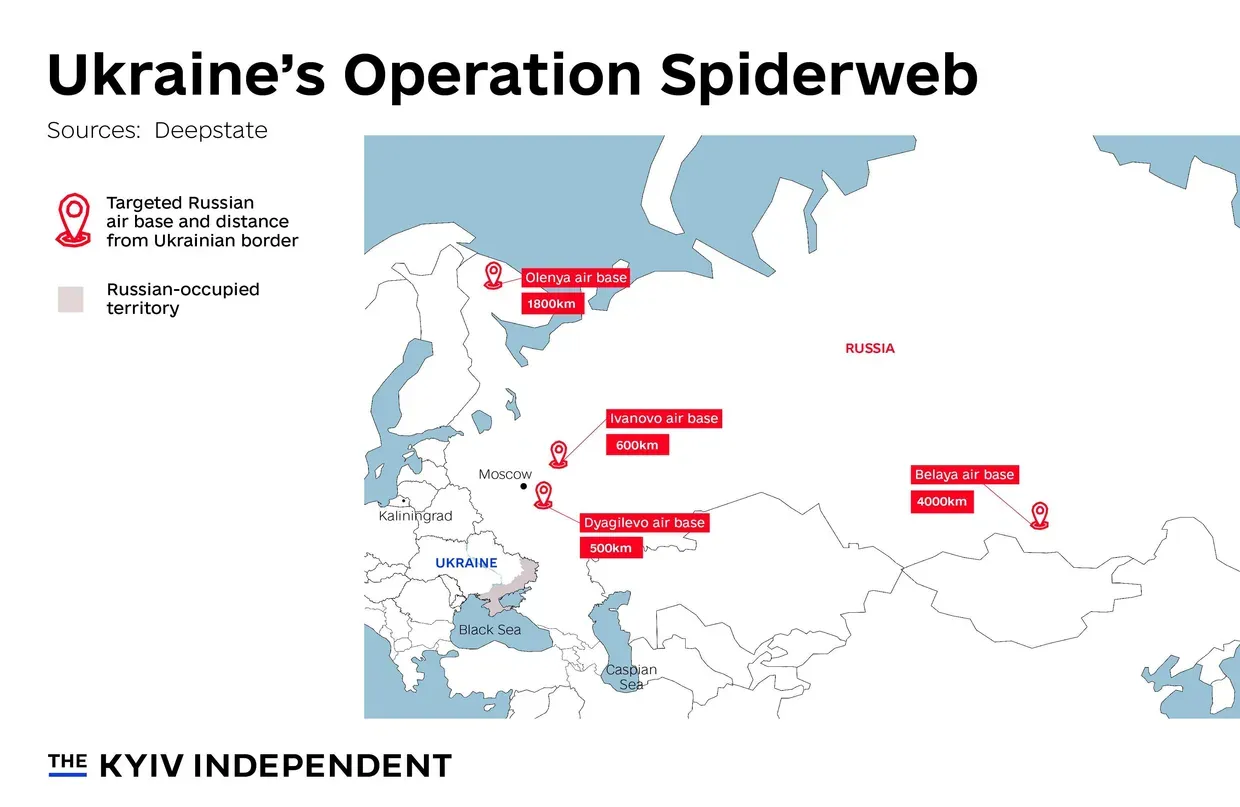
Ukraine’s Operation Spiderweb. (Nizar al-Rifai/The Kyiv Independent) Vandier said that NATO needs to act quickly to master new technologies in time, considering the looming Russian threat. But the admiral added that while drones are indispensable in modern warfare, they are not omnipotent.
“No one in the military sphere will tell you that we can do without what we’ll call traditional equipment,” Vandier said. “However, we are certain we need new equipment to complement it."
“Today, you won’t cross the Atlantic with a 10-meter-long (33-foot-long) drone. You won’t easily locate submarines with such tools,” he added.
“If they accompany your large platforms, you’ll be able to achieve much better results at much lower costs."
Ukraine has pioneered drone technology during Russia’s full-scale war, introducing various ground-, air-, and sea-based models for combat and reconnaissance missions.
Commander-in-Chief Oleksandr Syrskyi said on May 30 that Ukrainian soldiers hit and destroyed in May more than 89,000 Russian targets using drones of various types.
Ukraine is working to scale up domestic production. Kyiv has also developed long-range missile-drone hybrids, including the Palianytsia and Peklo models, which use turbojet engines as cruise missile alternatives.
By the end of 2024, Ukraine had developed a total of 324 new types of weapons, according to the Ministry of Strategic Industries.
-
'Not even capable of defeating Ukraine' — Orban questions Russia's ability to attack NATO
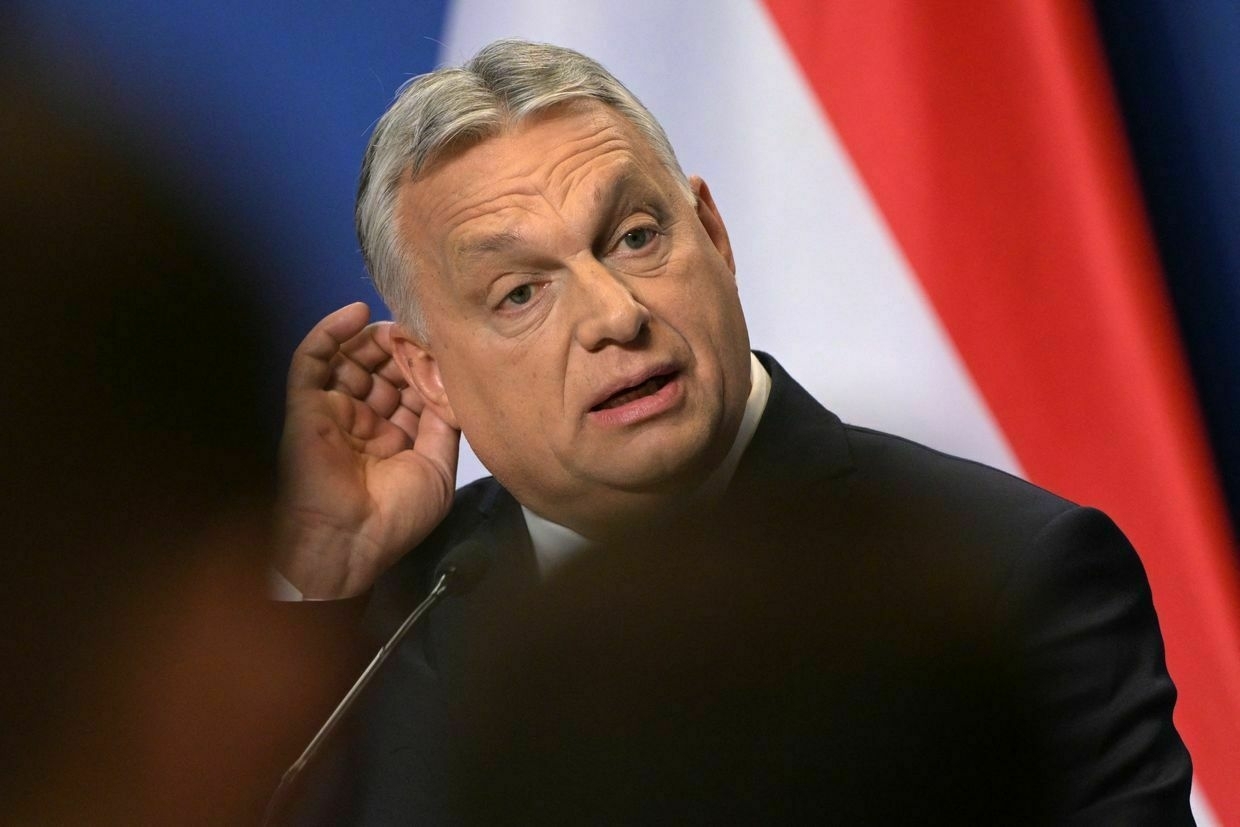
Hungarian Prime Minister Viktor Orban has questioned Russia’s ability to attack NATO countries, as it is not “even capable of defeating Ukraine,” he said in an interview with French TV channel LCI on June 8.
“The Russians are too weak for that,” Orban said. “They’re not even capable of defeating Ukraine, so they’re incapable of really attacking NATO."
Over three years into its full-scale war, Russia has failed to achieve Ukraine’s surrender or at least the complete occupation of Donetsk and Luhansk oblasts, which was reportedly among the Kremlin’s demands in Russia’s first peace proposal in 2022.
Russian troops have recently intensified their offensive, moving deeper into Sumy Oblast, as well as closing in on Dnipropetrovsk Oblast.
Russian propaganda has for years insisted that NATO and its further expansion pose a threat to Moscow. The Kremlin has also claimed that Ukraine’s ambition to join NATO was a major trigger for its invasion, although in 2014, when Moscow annexed Crimea and started the war in the Donbas region, Ukraine’s chances and desires of joining the alliance were low.
Orban, widely regarded as the European Union’s most pro-Russian leader, said that it is not in the interests of the EU, including Hungary, to have “a direct conflict with Russia” or “a threat of war,” so Ukraine must not join NATO.
“Europe must be strengthened in the long term, and there must be a strategic agreement with Russia,” Orban said, adding that sanctions against Russia are “destroying Hungary and the whole of Europe."
Under the Orban regime, Hungary has become widely regarded as the most Kremlin-friendly state in the EU.
Budapest has been blocking the opening of EU accession negotiation clusters with Kyiv and signaled further obstruction in recent weeks after Ukraine’s Security Service (SBU) said it had uncovered a Hungarian spy network in western Ukraine.
Orban also encouraged Hungarians to vote in a non-binding national poll on Ukraine’s EU bid that the government launched in early March. The poll has garnered criticism for low turnout and manipulative questions, written to encourage citizens to reject Ukraine’s accession.
Key to Russia’s potential defeat lies in its economyAs the war in Ukraine grinds on, attention remains fixed on the battlefield. But Russia’s most vulnerable flank is not in the trenches — it’s in the treasury. The West, and especially the United States, holds economic levers that could push Vladimir Putin toward serious negotiations or even collapseThe Kyiv IndependentWojciech Jakóbik

-
What UK's Strategic Defense Review means for Ukraine
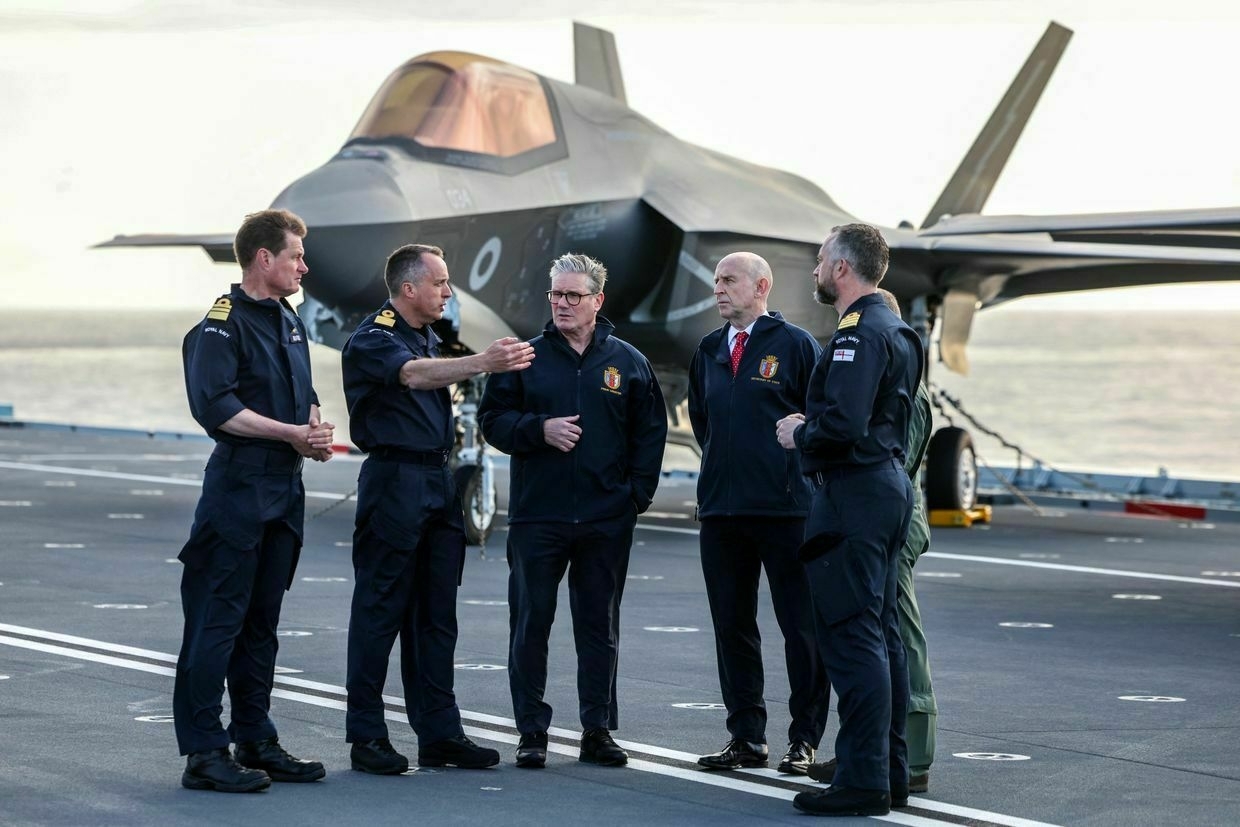
British Prime Minister Keir Starmer announced on June 2 that the United Kingdom is moving to “warfighting readiness,” in large part in response to the full-scale invasion of Ukraine and the threat Russia poses to Europe.
He made the comment as his government unveiled its latest Strategic Defense Review, which U.K. General Richard Barrons, one of the review’s authors, described as the “most profound” change in U.K. defense in 150 years.
The review sets out ambitious new targets, including at least 12 new attack submarines, fleets of drones and autonomous vehicles, as well as 7,000 new long-range weapons.
Yet it also comes with urgent warnings.
The review reveals that the U.K.’s Armed Forces are currently unprepared to fight adversaries such as Russia or China, nor could they conduct high-intensity warfare in a war like that in Ukraine.
Insufficient munition stockpiles, low troop numbers, and ageing equipment are just a few of the weaknesses underpinning its assessment.
“The speed of development in Ukraine is so far ahead of what countries like the U.K. is capable of.”
But as well as committing to bolstering its own defense capabilities, the U.K. must also manage the commitments already made to Kyiv, which it has vowed to support with a "100-year partnership."The U.K. has been one of Kyiv’s closest supporters since the start of the full-scale invasion, and the review reiterates long-term support for Ukraine, committing 3 billion pounds ($4.06 billion) annually in military aid.
"The bottom line is that all of this is about defending the U.K. after the conflict moves on from Ukraine primarily," Keir Giles, a senior consulting fellow at Chatham House, a U.K.-based think tank, told the Kyiv Independent.
"Whether it's positive, negative, or catastrophic, either way, that's when the U.K. and its allies need to be ready for Russia's next move."
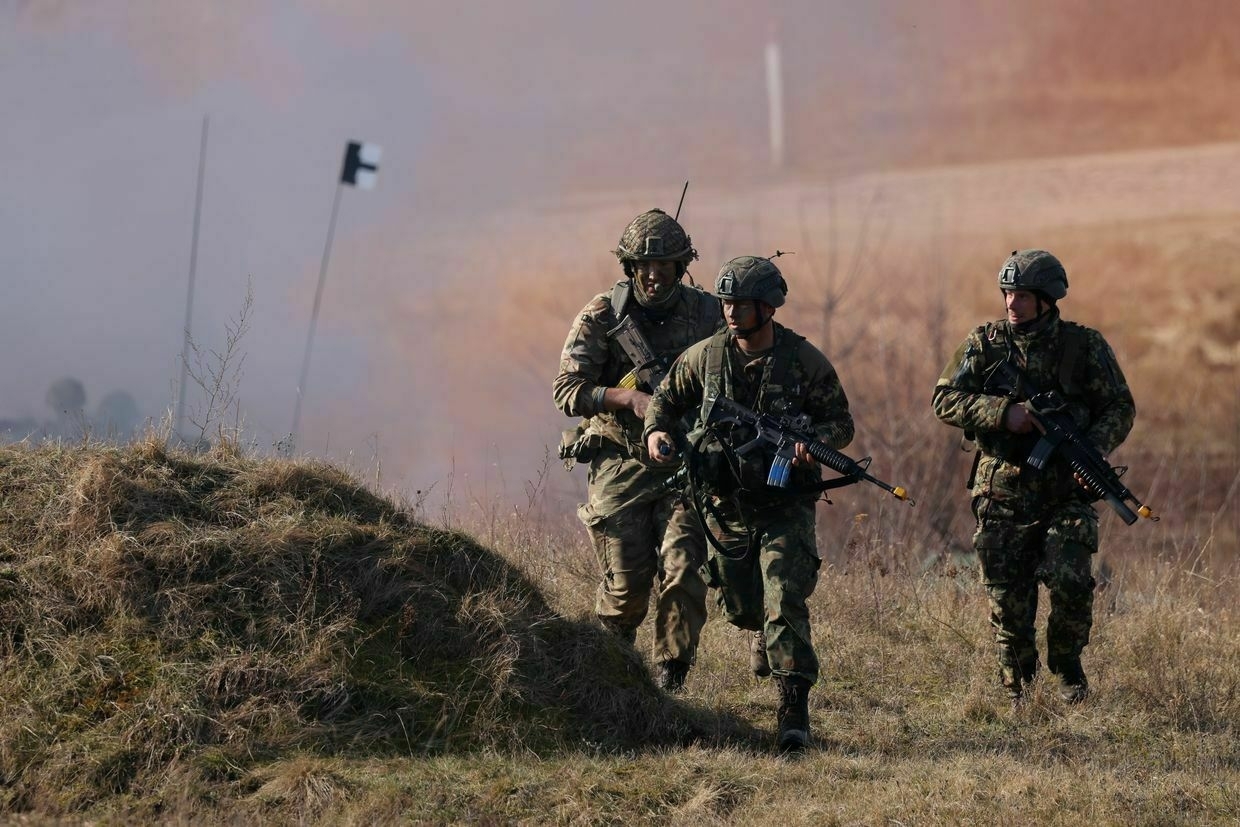
Soldiers of the U.K.’s 2nd Battalion Royal Anglian storm an enemy position during NATO’s Brilliant Jump exercise in Drawsko Pomorskie, Poland, on Feb. 26, 2024. (Sean Gallup / Getty Images) Lessons learned from UkraineThe U.K. wants to create a more flexible procurement process, as demonstrated by that developed by Ukraine throughout the full-scale invasion, a dynamic it says would be vital should the U.K. deploy troops in support of a ceasefire.
The review urges deeper defense industrial collaboration, including joint ventures and helping Ukraine access global markets, as well as rebuilding and sustaining its defense sector.
This could include helping Ukraine service Soviet-era equipment still used abroad. The U.K. also aims to learn from Ukraine’s experience in modern warfare, particularly in land combat, drones, and hybrid threats.
However, the review highlights challenges — U.K. stockpiles of weapons such as Storm Shadow long-range missiles have been depleted through its support to Ukraine, and years of underinvestment have weakened domestic defense capacity.
The U.K. has announced that it will build six new munition factories. This indicates a significant attempt to address one of the key criticisms of European defense, which is its lack of industrial base and reliance on U.S. support.
While U.K. Defense Secretary John Healey has said that "we should expect to see new factories opening very soon," it is not clear how quickly this will translate into meaningful battlefield assistance for Ukraine’s Armed Forces.
"The speed of development in Ukraine is so far ahead of what countries like the U.K. are capable of, the best-case outcome for Ukraine would just be sending the money there to build stuff," Giles said.
When asked how Ukraine could be best supported outside of the recommendations in the review, Giles said the "maximum support" should be given to Ukraine, without the hesitancy about doing damage to Russia."
-
Russia sentences 2 Azov fighters to over 20 years in prison
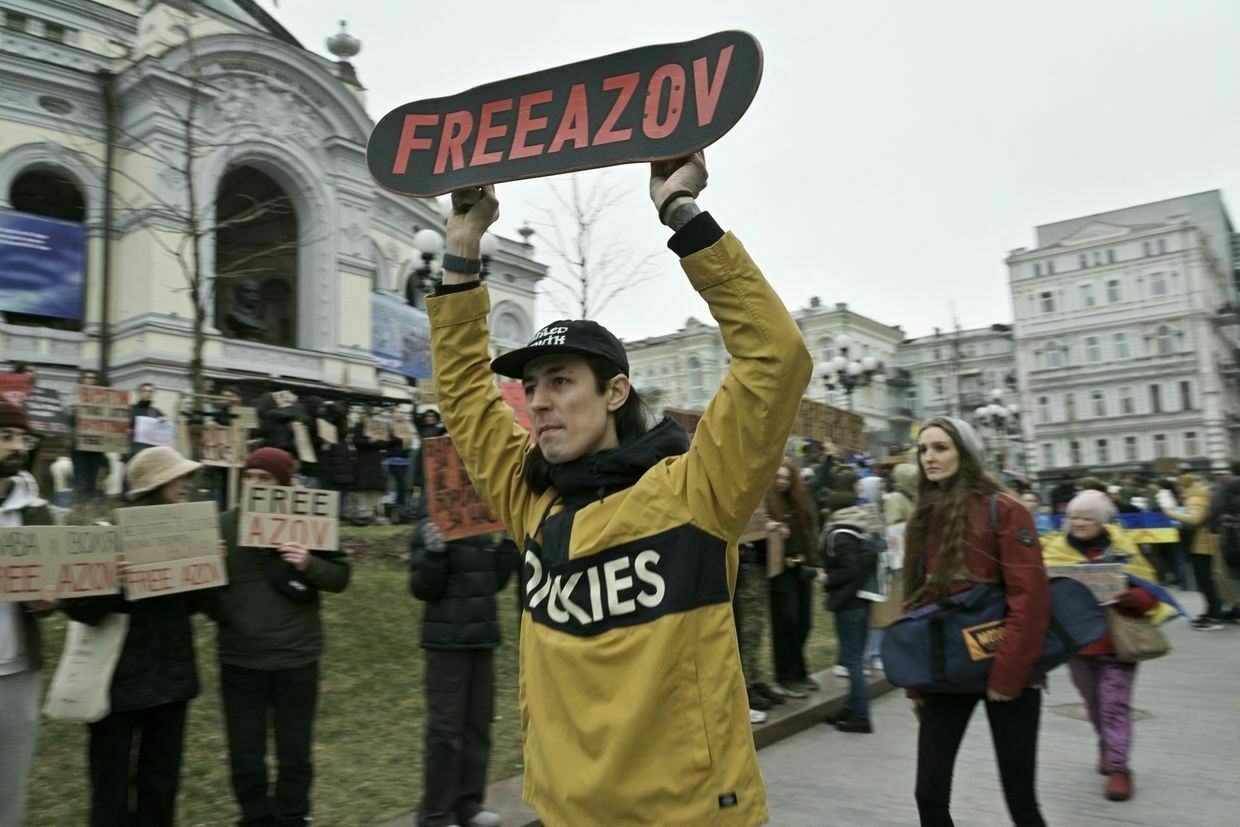
A Russian court has sentenced two Ukrainian soldiers of the Azov Brigade to more than 20 years in prison for allegedly killing civilians in the city of Mariupol in Ukraine’s Donetsk Oblast, Russia’s Investigative Committee announced on June 9 on Telegram.
Russia has held a number of sham trials with Ukrainian prisoners of war (POWs) over the past years, focusing in particular on Azov fighters captured during the war. Azov has been demonized by Russian propaganda for years.
Russian authorities accuse sniper Ruslan Orlov and paramedic Artem Novikov of shooting three civilians in Mariupol in April 2022. The Russian court sentenced Orlov to 26 years in a strict regime colony, and Novikov to 24 years.
Ukraine has not yet commented on the Russian Investigative Committee’s statement.
Russia’s months-long siege of Mariupol between February and May 2022 reduced the port city to a landscape of rubble and killed thousands.
In the meantime, the Azovstal Steel Plant in Mariupol became a symbol of Ukrainian resistance at the onset of the all-out war, as Ukrainian soldiers valiantly defended the plant under the Russian siege.
On May 16, 2022, Azovstal defenders were ordered to surrender to the encircling Russian forces after nearly two months of constant bombardment of the besieged plant.
The evacuation from Azovstal ended on May 20, 2022, with Ukrainian soldiers transferred to a penal colony in Russian-occupied Olenivka, Donetsk Oblast, now infamous as the site of the mass killing of Azov fighters.
On July 28, an explosion killed 54 Ukrainian prisoners of war and injured over 150 at the Olenivka penal colony. Many of them were members of Azov.
While hundreds of Azov fighters have been released since 2022, hundreds more remain in captivity.
War’s unseen isolation: A Ukrainian officer’s story of survival and hopeA lot depends on the circumstances under which you try to define or feel your own loneliness. Let me begin with my biography — my recent story. I joined the army in the first days of Russia’s full-scale invasion in 2022, as an officer in the Armed Forces of Ukraine.The Kyiv IndependentMaksym Butkevych
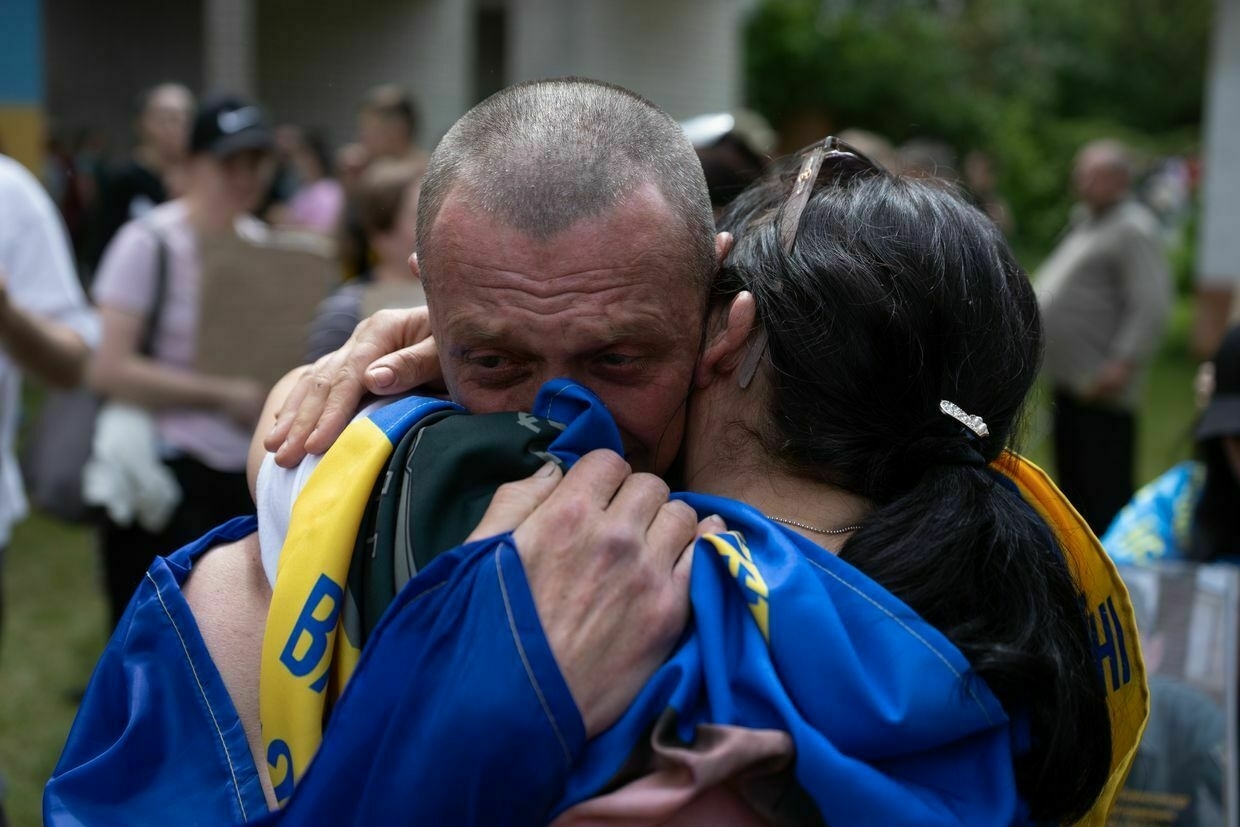
-
Ukrainian “good” drones strike deep into Russia - defense facilities are burning #shorts
-
Ukraine hits Russian air bases again! The immediate aftermath | Front Line with @StarskyUA
-
Ex-Ukrainian military official suspected of $290,000 in illicit enrichment
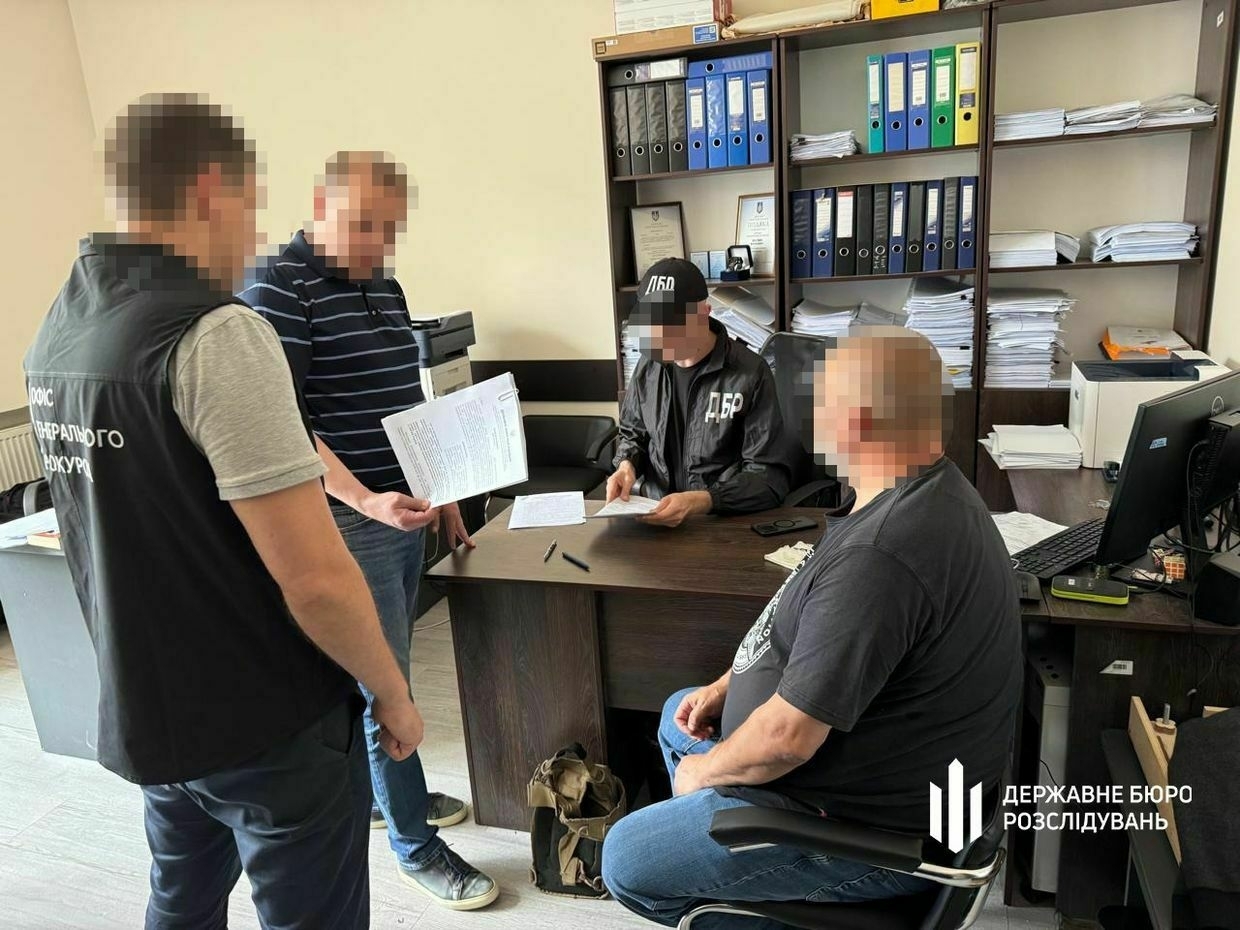
A former head of one of the key departments in the Logistics Forces of Ukraine’s Armed Forces is suspected of illicit enrichment worth Hr 12 million ($290,000) and illegal possession of weapons, the State Investigation Bureau (DBR) and the National Agency on Corruption Prevention announced on June 9.
Ukraine’s military has seen several corruption scandals since the start of Russia’s full-scale war, related to illicit enrichment, money laundering, bribery, and misconduct of the command.
The agencies did not disclose the suspect’s name, who faces up to 10 years in prison if convicted.
During 2023-2024, the ex-head of the department purchased 14 land plots in Kyiv Oblast, an apartment, a Toyota Tundra, a Skoda Octavia, a Hyundai Tucson, and domestic government bonds issued by Ukraine’s Finance Ministry, according to the National Agency on Corruption Prevention.
Meanwhile, the suspect and his family had no financial means to purchase these assets, the agency’s statement reads.
While searching the suspect’s house, law enforcement officers also found weapons and ammunition stored illegally.
The preventative measures for the suspect are now being considered.
Ukraine’s Logistics Forces, established in 2018, are in charge of providing supplies and technical maintenance for the Ukrainian troops on the front line. This branch of the armed forces is also responsible for adapting the Ukrainian army to NATO standards, particularly in the field of logistics.
Exclusive: Ukraine could face 500+ Russian drones a night as Kremlin builds new launch sitesRussia will soon be able to deploy more than 500 long-range drones a night to attack Ukraine as it ramps up production and builds new launch sites for them, a source in Ukraine’s military intelligence (HUR) has told the Kyiv Independent. According to the source, Russia’s production rate for oneThe Kyiv IndependentKollen Post
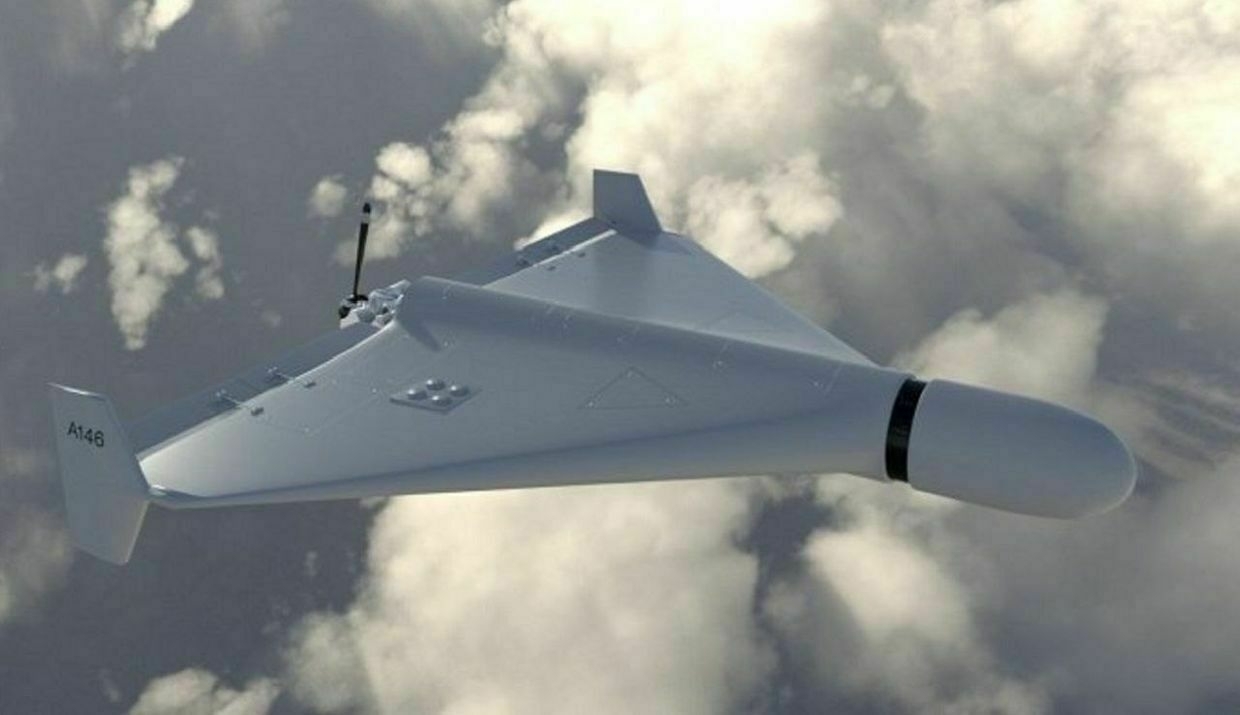
-
Key to Russia’s potential defeat lies in its economy

As the war in Ukraine grinds on, attention remains fixed on the battlefield. But Russia’s most vulnerable flank is not in the trenches — it’s in the treasury. The West, and especially the United States, holds economic levers that could push Vladimir Putin toward serious negotiations or even collapse his ability to sustain the war altogether.
Recent developments signal a shift in Washington’s posture. Military aid to Ukraine has resumed, and a landmark U.S.-Ukraine resource agreement was signed on April 30.
More significantly, senators — led by Republican Lindsey Graham — are advocating sanctions that would impose 500% tariffs on Russian oil and commodity exports. Moscow has reacted with alarm, calling this initiative a “counteroffensive from the American deep state.” It’s no bluff. The Kremlin is right to be worried.
What truly threatens Putin’s war machine is energy revenue — or rather, the loss of it. The Russian economy is deeply dependent on oil and gas exports, with the 2025 federal budget based on an oil price of $70 per barrel. But Russian Urals crude is now priced around $60, and could fall further. Saudi Arabia, frustrated by non-compliance within OPEC+, is allowing oil prices to drop, potentially triggering a price war. Riyadh has openly stated it can withstand a prolonged period of low prices — a veiled threat aimed at Moscow and other OPEC+ defectors.
Exclusive: Russia’s ballistic missile production up at least 66% over past year, according to Ukrainian intel figuresRussia’s production of ballistic missiles has increased by at least 66% over the past year, according to data from Ukraine’s military intelligence (HUR) shared with the Kyiv Independent. According to data obtained by HUR, Moscow is now producing 60 to 70 Iskander-M — the ballistic version of the missile — and 10The Kyiv IndependentKollen Post
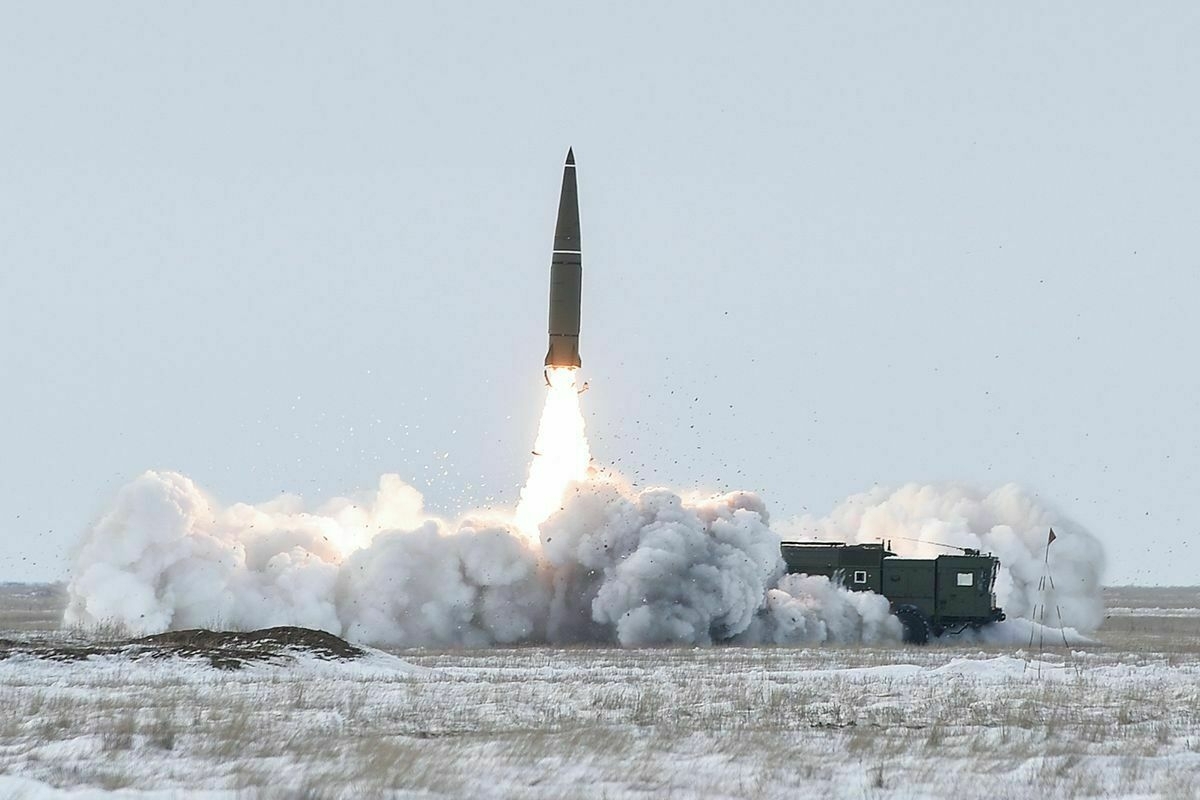
The effects are already visible. Russia has slashed its oil revenue forecast for 2025 by 24%, with the Finance Ministry predicting a drop from 11 trillion to 8.3 trillion rubles. The country’s oil production could decline by up to 50% by 2030, largely because newer reserves are technically difficult and capital-intensive to extract. That’s why Moscow is quietly seeking Western — specifically U.S. — expertise to develop these fields. A coordinated, firm sanctions regime from Washington and Brussels could shut that door completely.
Simultaneously, the U.S. and Saudi Arabia are deepening their energy partnership, particularly in liquefied natural gas (LNG). Saudi Aramco has reportedly signed memoranda of understanding with American LNG exporters like NextDecade and Sempra. The latter already holds a major supply contract with Poland’s Orlen, and the U.S. is now poised to become a key alternative gas supplier to Central and Eastern Europe. These investments will expand global LNG capacity and bring prices closer to the U.S. Henry Hub benchmark — lowering Europe’s dependence on Russian gas.
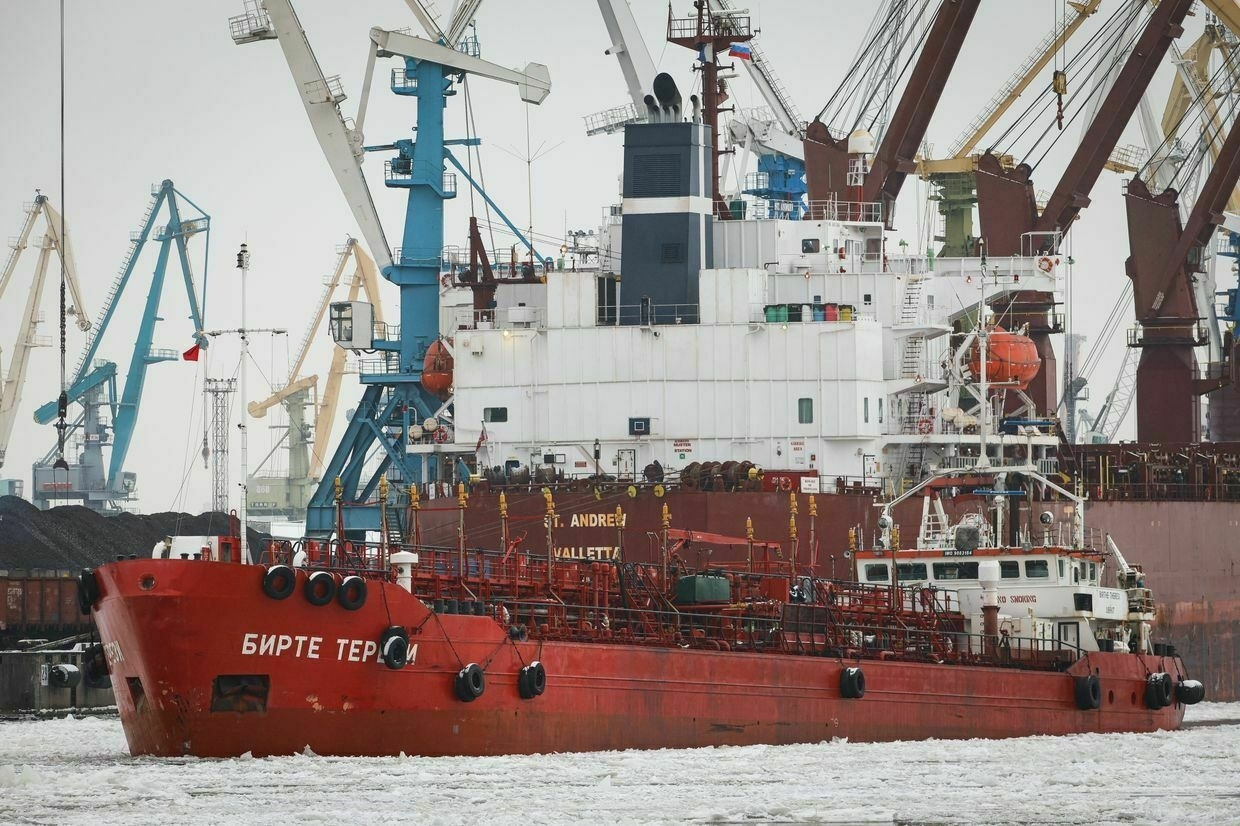
The oil and chemical tanker Birthe Theresi sails along the Sea Canal of the Big Port in St. Petersburg, Russia, on Feb. 12, 2025. (Artem Priakhin / SOPA Images / LightRocket via Getty Images) Poland and Ukraine are moving to capitalize on this trend.
Warsaw has announced plans for a second floating LNG terminal, which could eventually supply Slovakia and Hungary — two nations historically reliant on Russian gas. Ukraine, meanwhile, is gaining investor interest now that the U.S. has committed to a joint Reconstruction and Investment Fund, funded through future resource extraction projects. For the first time since the full-scale invasion began, Western business sees a path forward in Ukraine’s energy sector.
The implications for Russia are grave. Military spending has ballooned to 6.3% of GDP — its highest level since the Cold War — while the budget deficit continues to rise. To fund its war, the Kremlin is raiding reserves, raising taxes, and cutting social programs. Absent war spending, Russia might already be in recession. The regime increasingly relies on military conflict to justify domestic hardship and consolidate power.
Inside Russia, calls for peace come with conditions — and Kremlin talking pointsFollowing the second round of direct peace talks with Ukraine, the Russian side leaked its proposal on how to end its war — effectively a demand for Ukraine’s surrender. Yet, if the intentions of the Kremlin are no secret — continue the war until a political or military victory — getting information onThe Kyiv IndependentOleg Sukhov
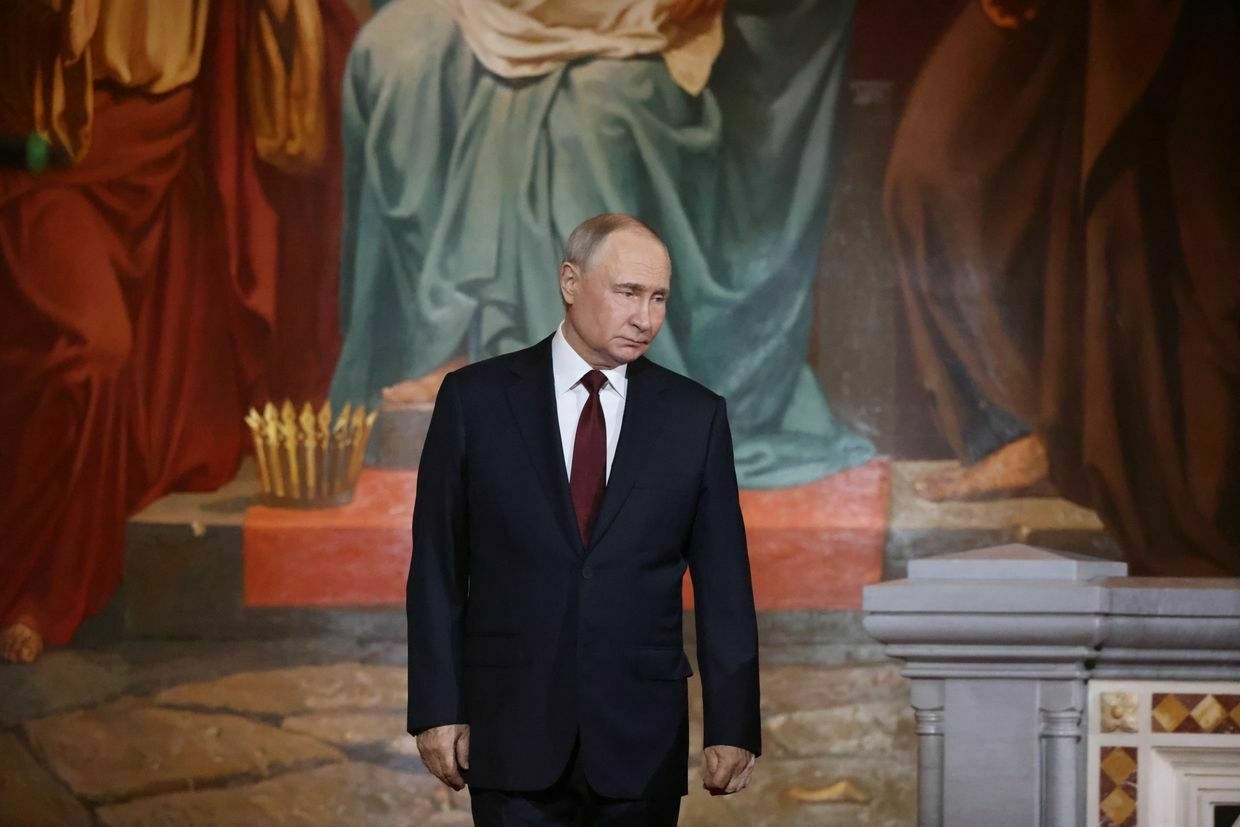
But the geopolitical landscape is shifting. The combination of low oil prices, expanding LNG competition, and targeted U.S. sanctions could inflict sustained economic damage on Russia without risking American or European lives. Energy diplomacy, not just weaponry, could determine the outcome of this war.
The next steps are critical. The White House must maintain pressure — not just by providing Ukraine with military aid, but by deepening its energy cooperation with allies and enforcing robust sanctions. The message to Moscow should be clear: the price of continuing the war will be economic asphyxiation.
If the United States can coordinate its economic tools with allies in Europe and the Middle East, Russia may find itself unable to afford the very war it insists on waging.
Editor’s Note: The opinions expressed in the op-ed section are those of the authors and do not necessarily reflect the views of the Kyiv Independent.
